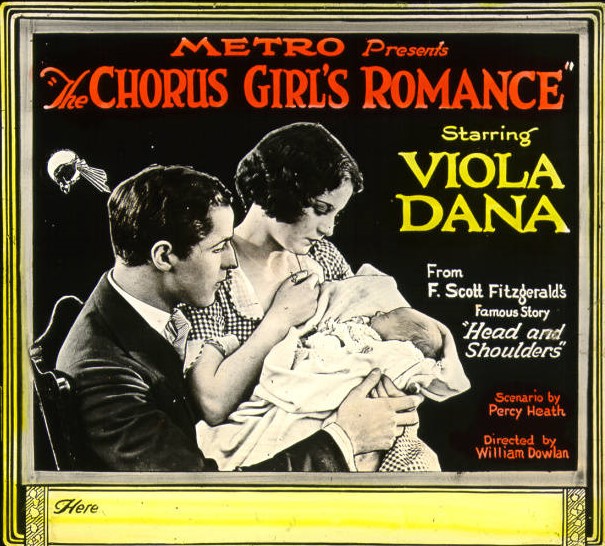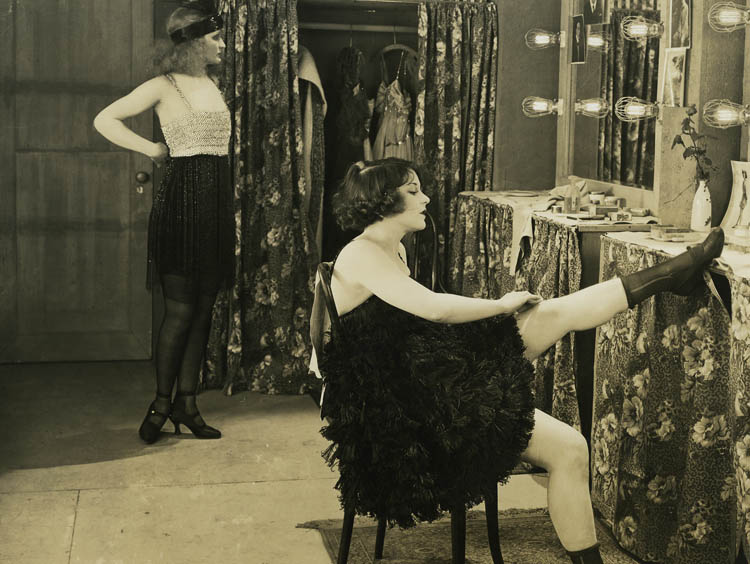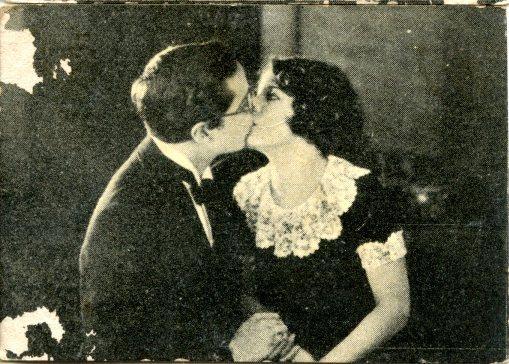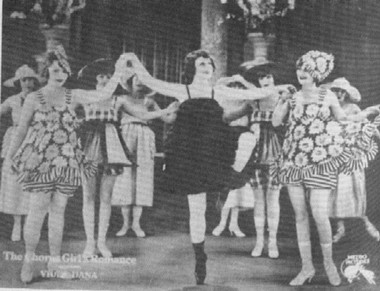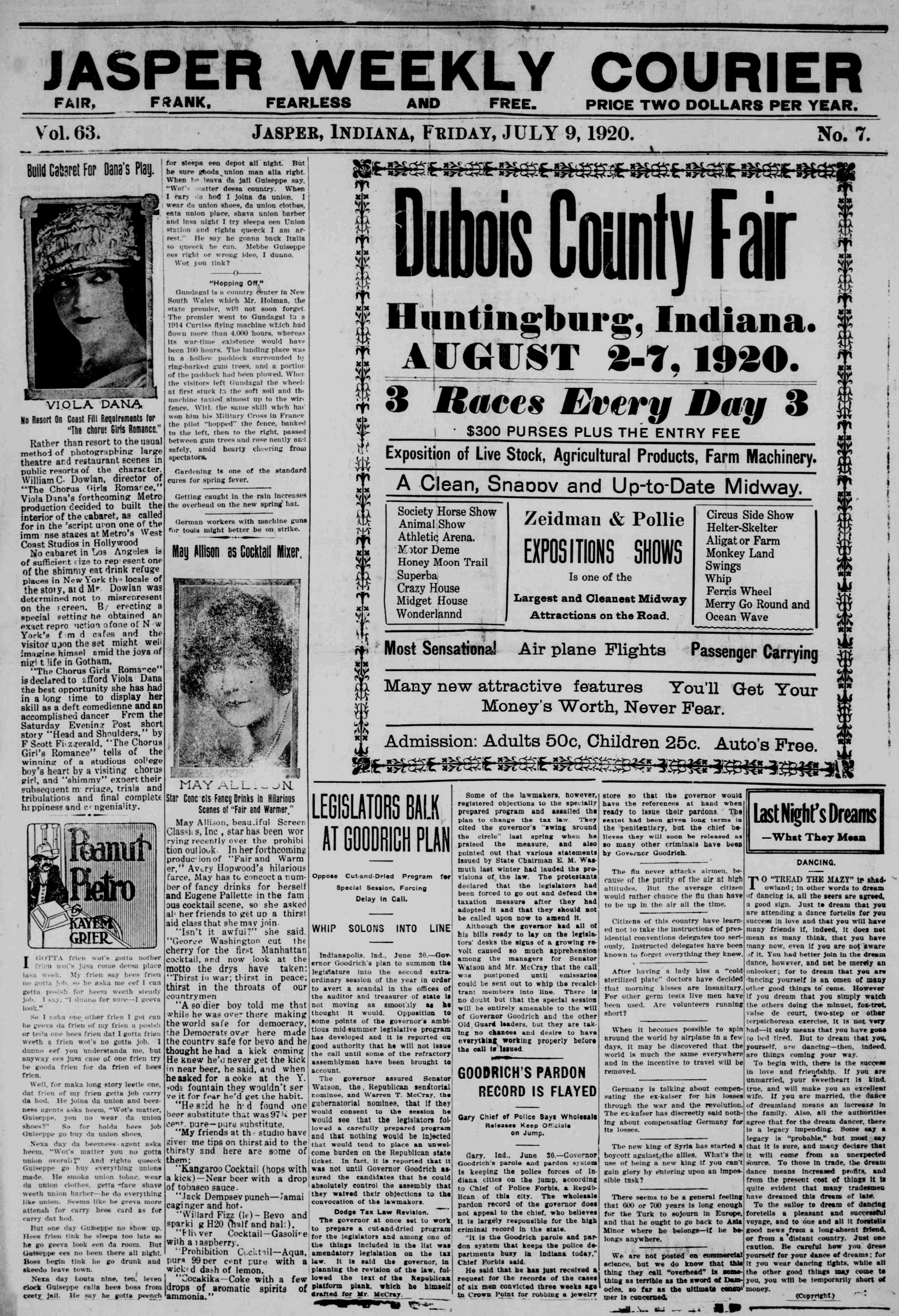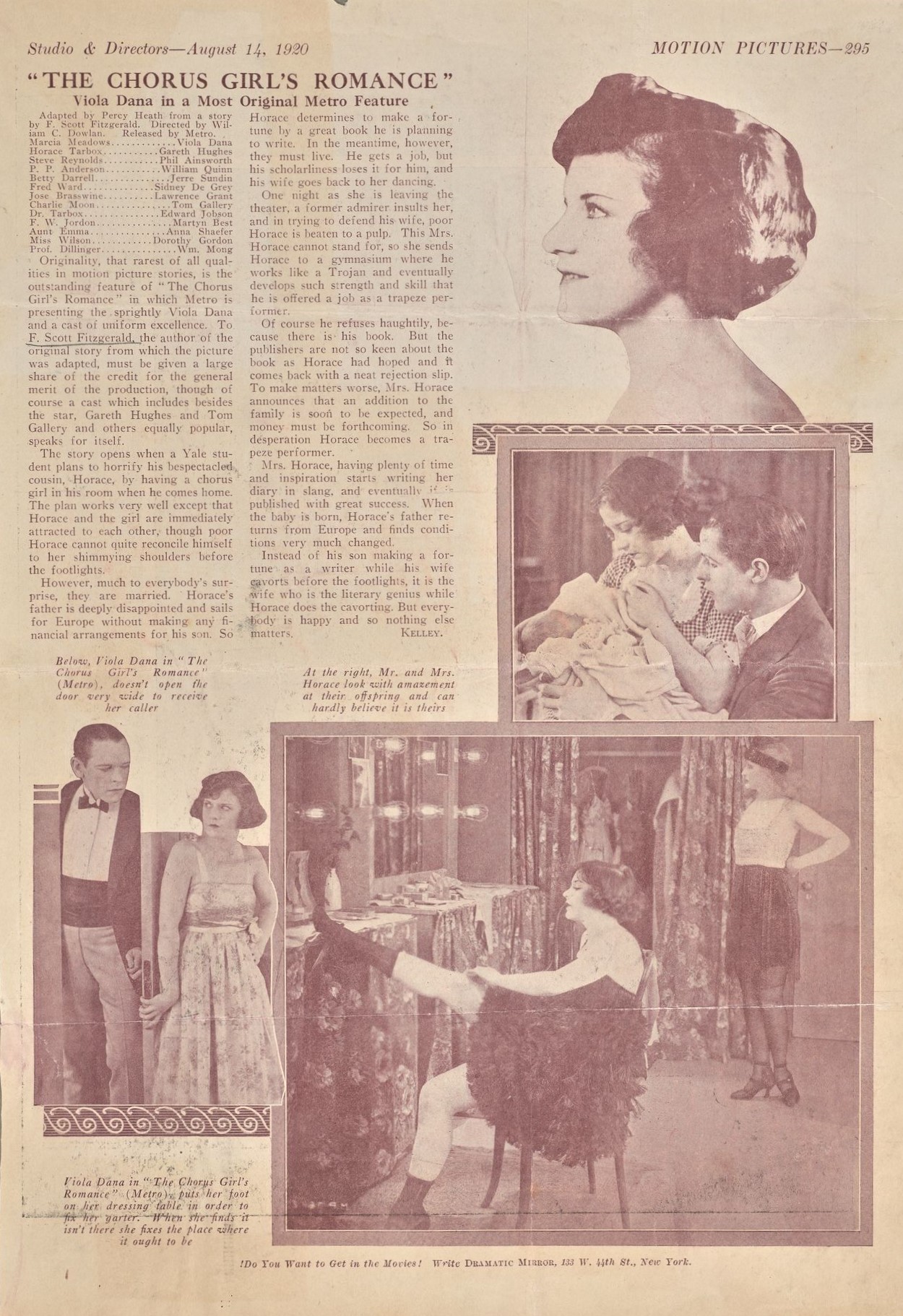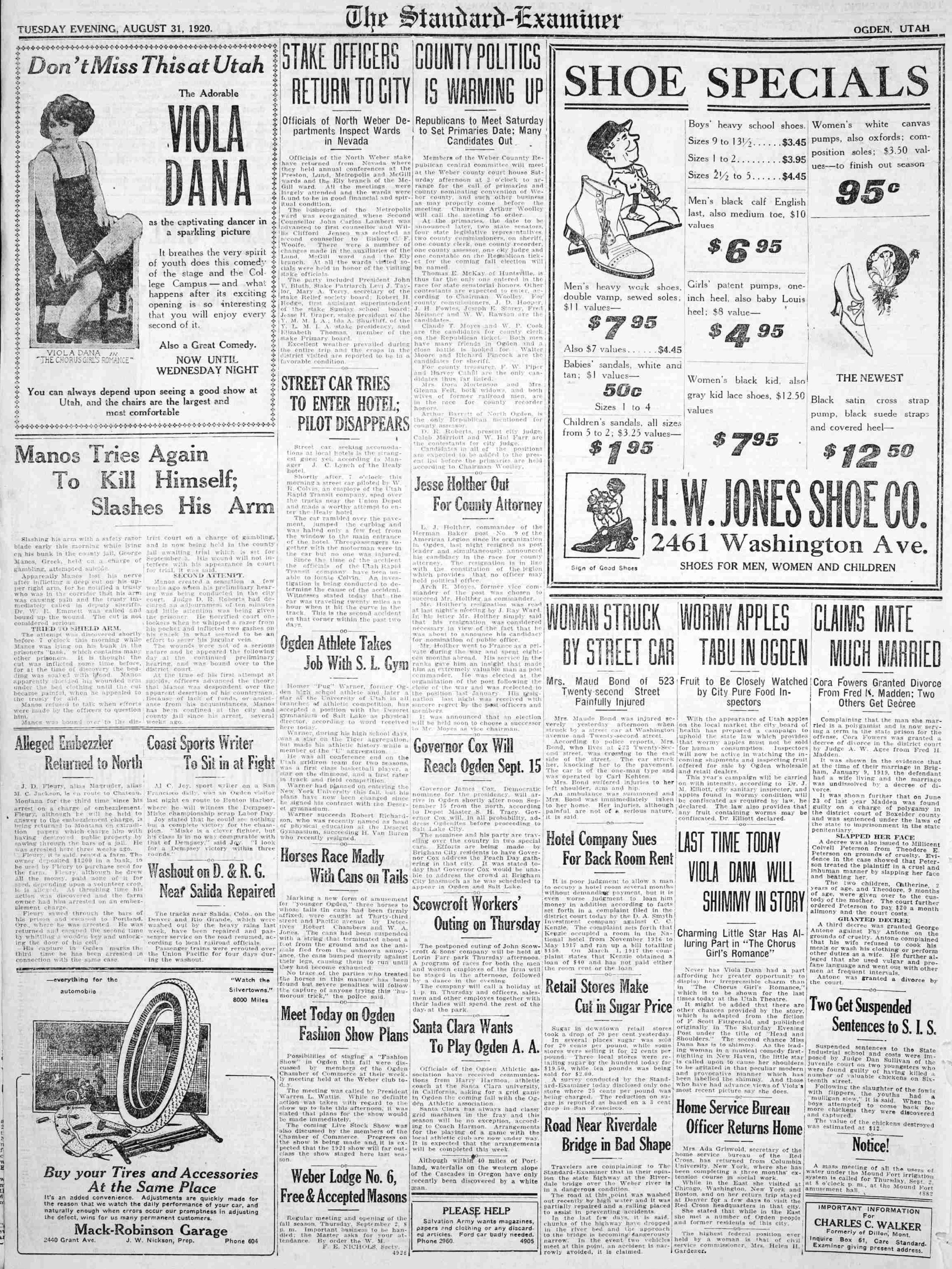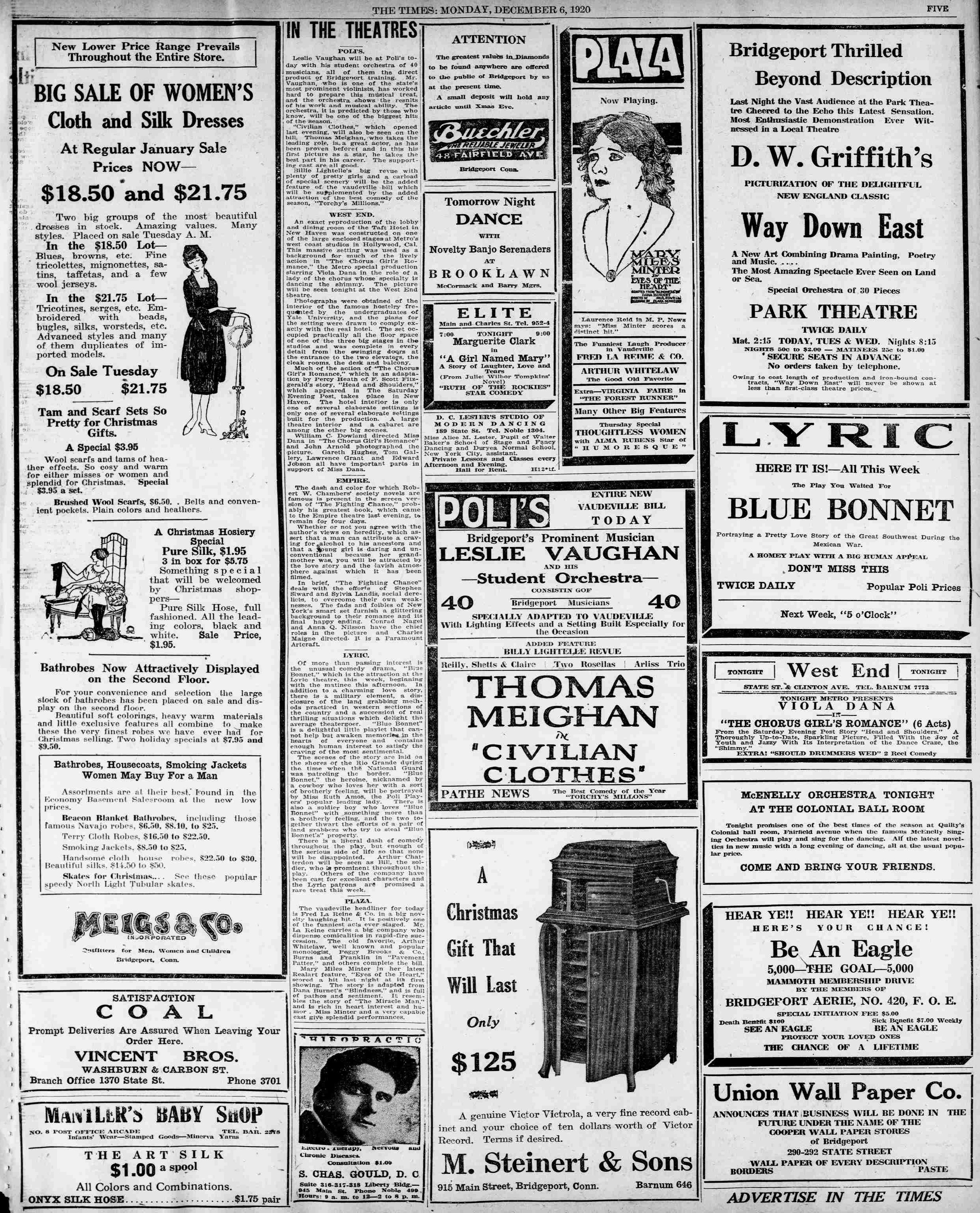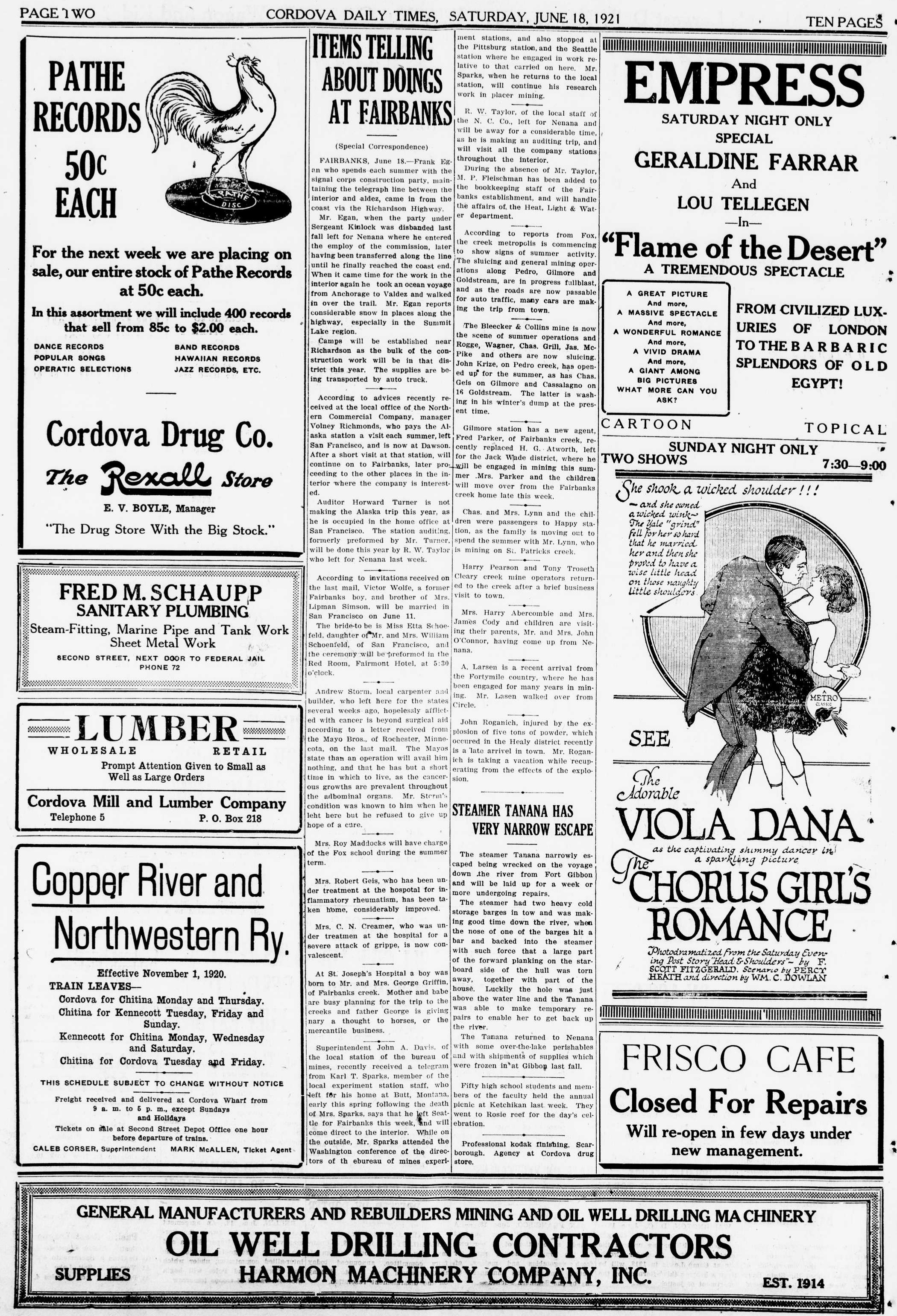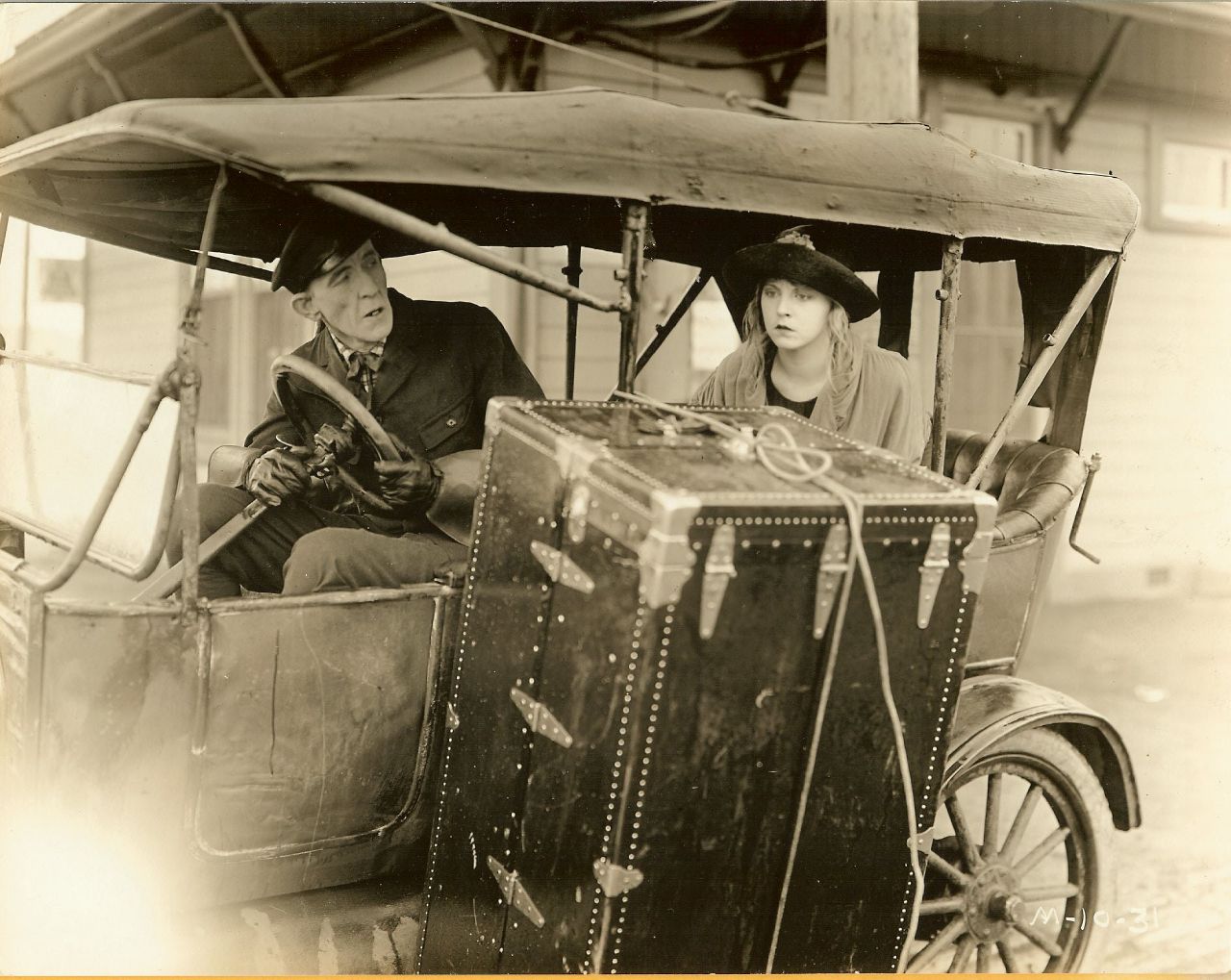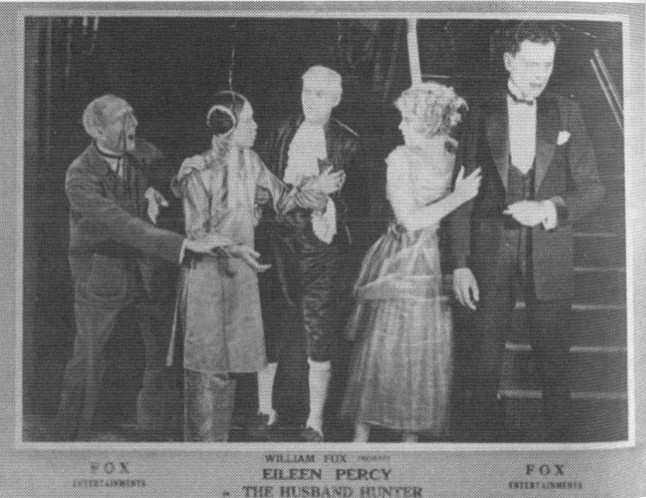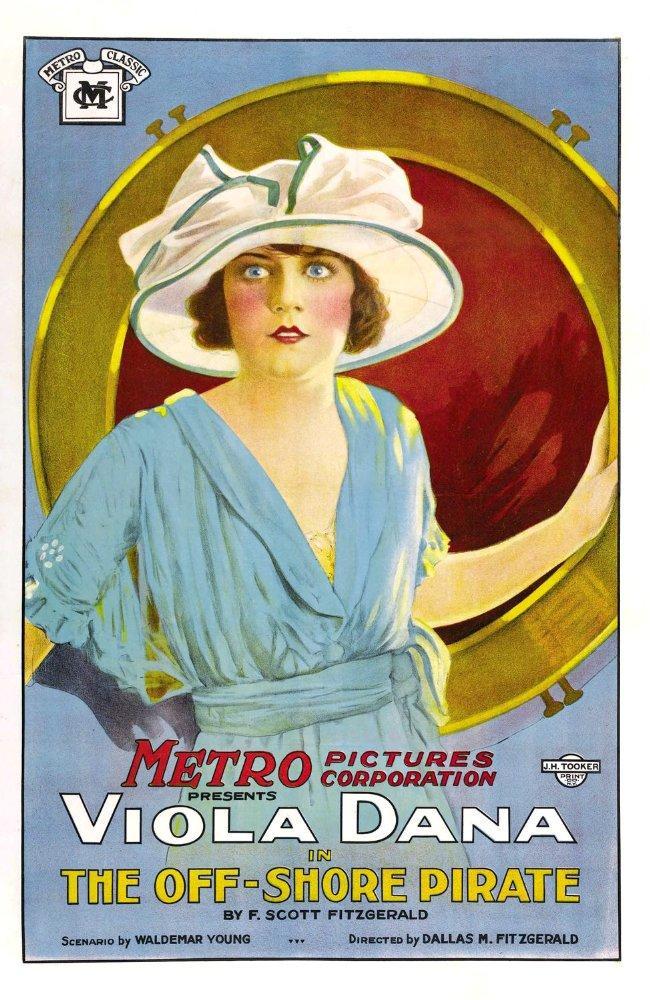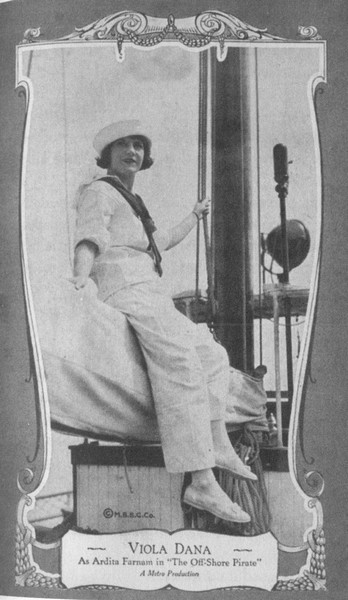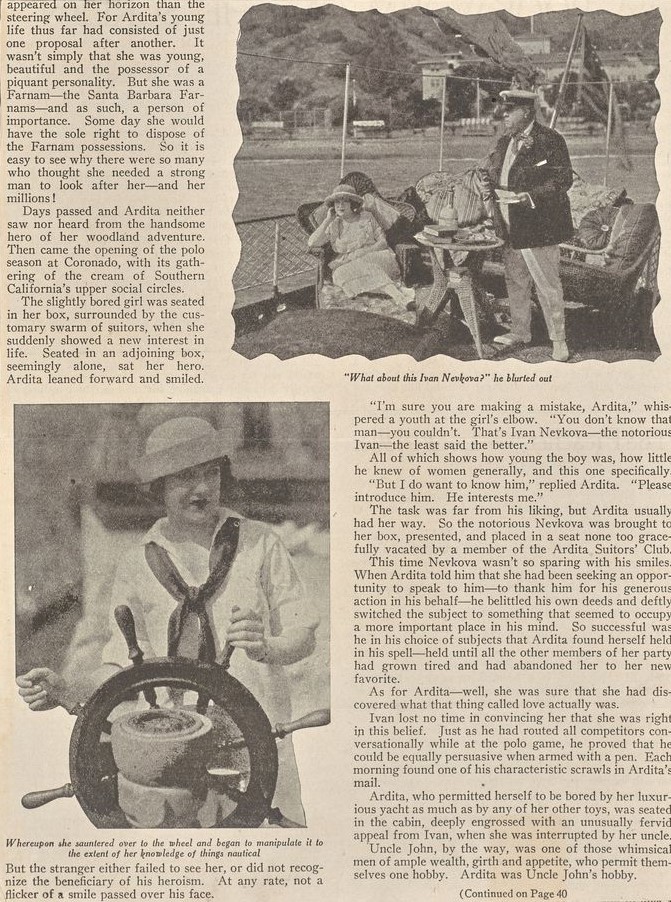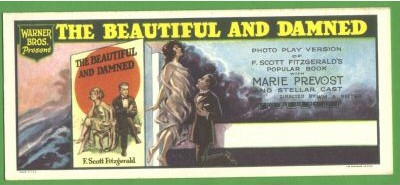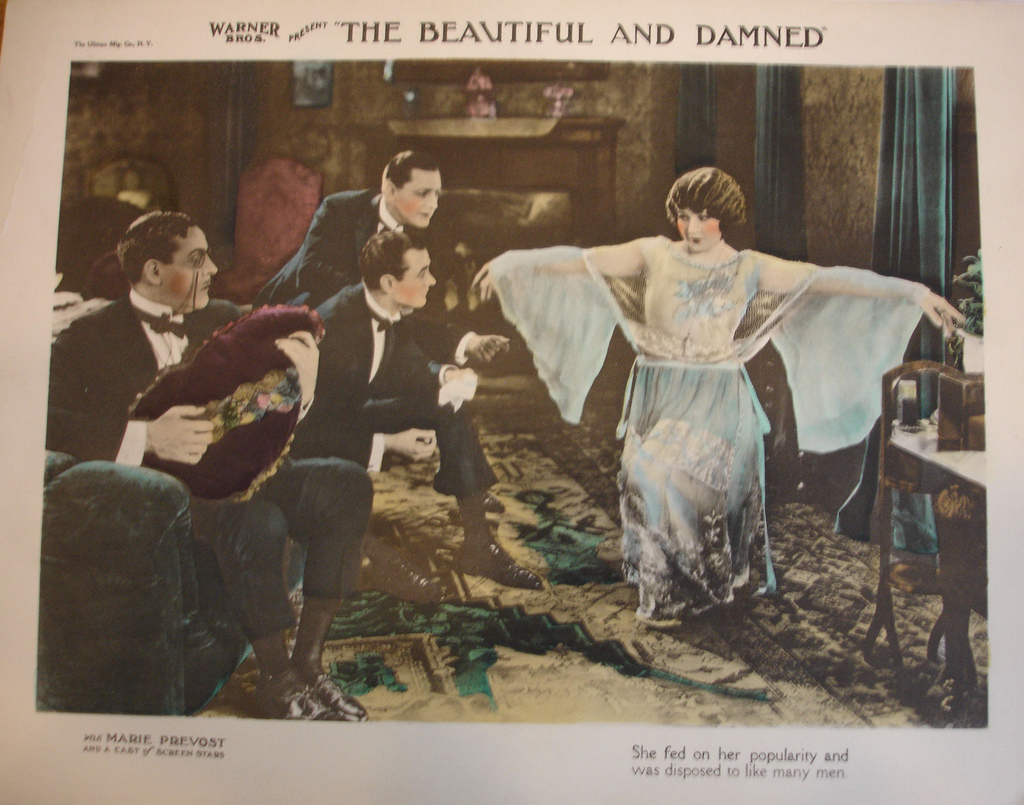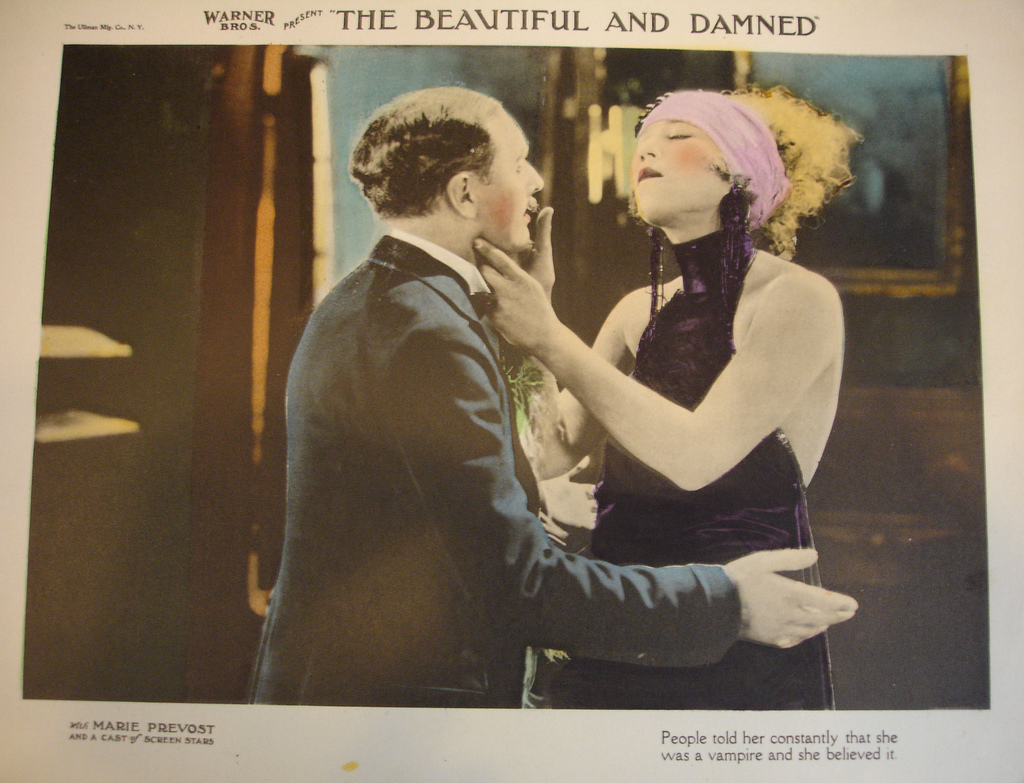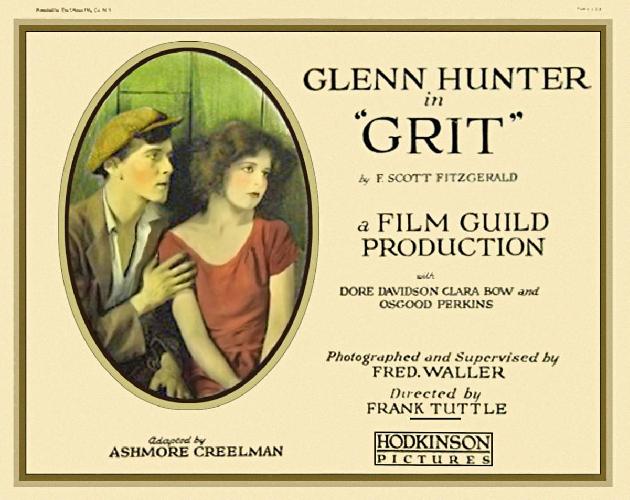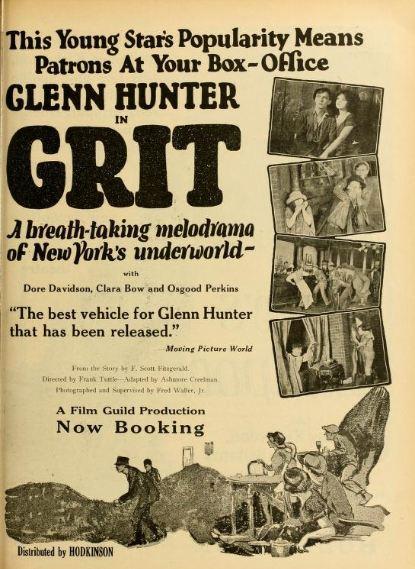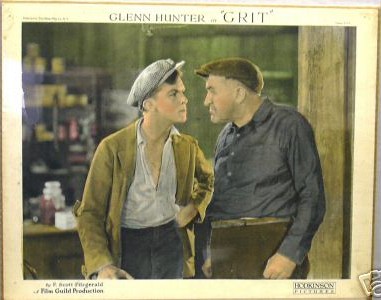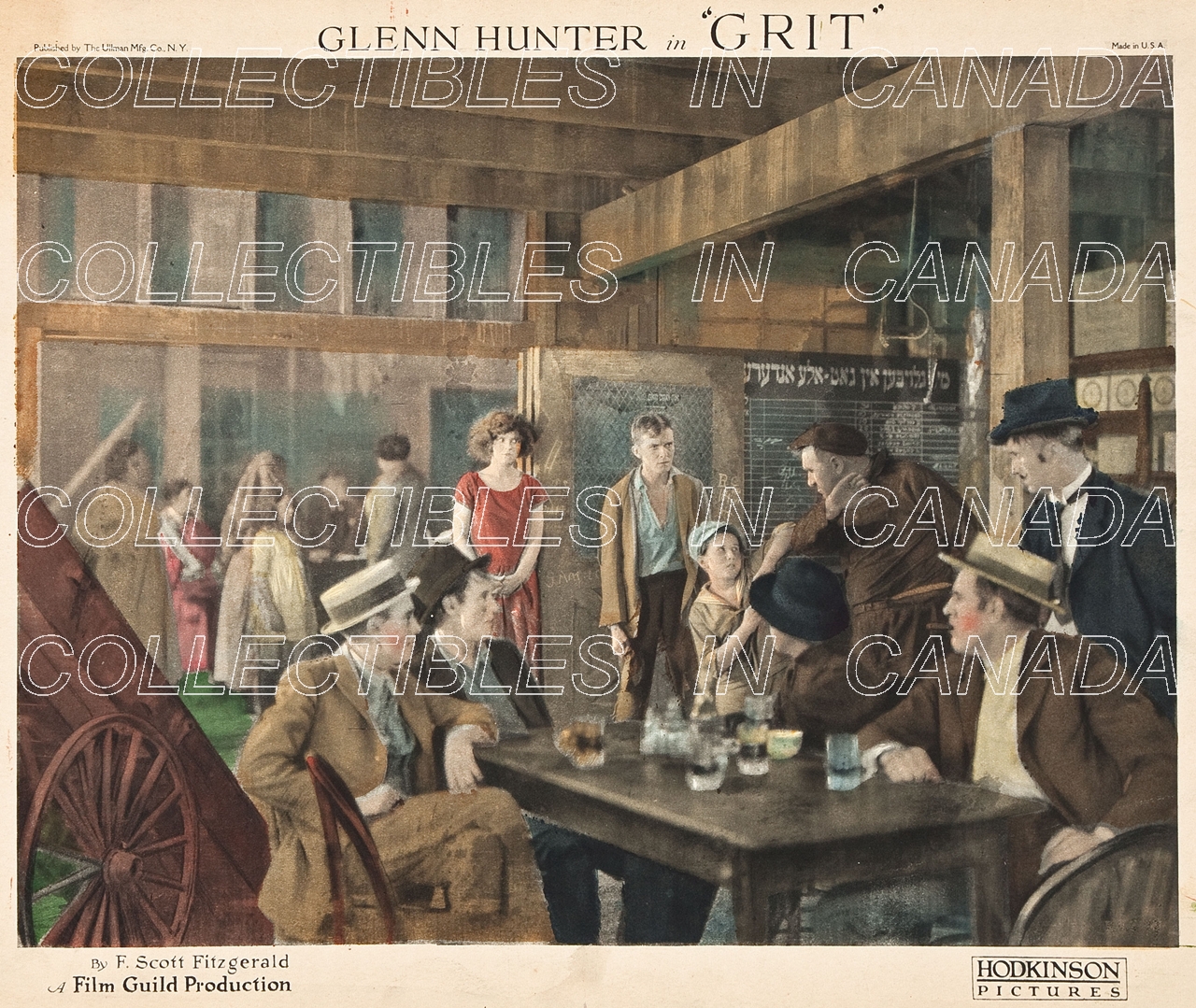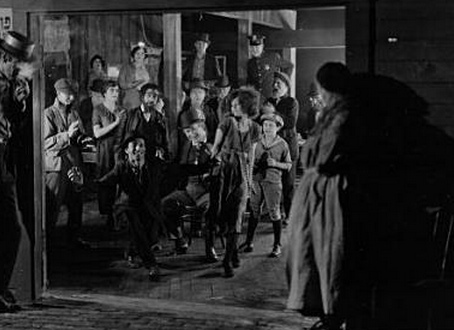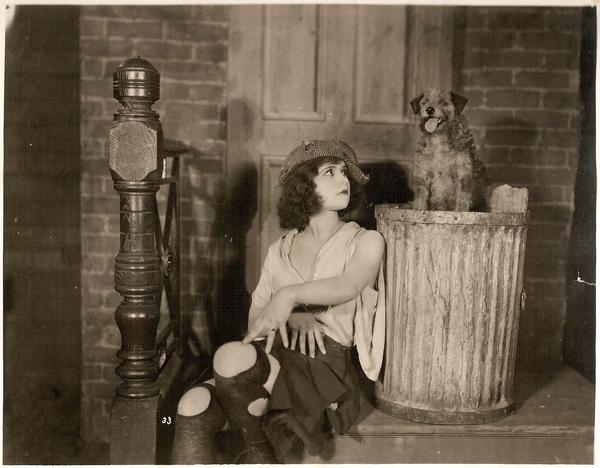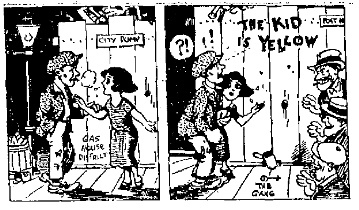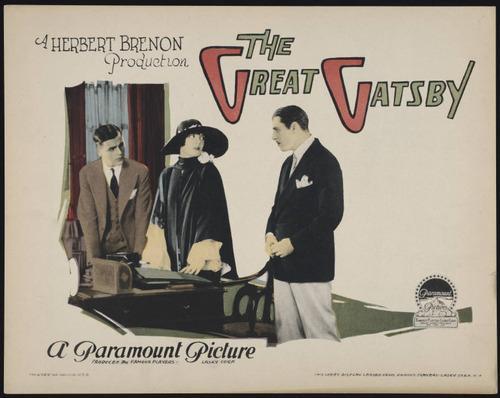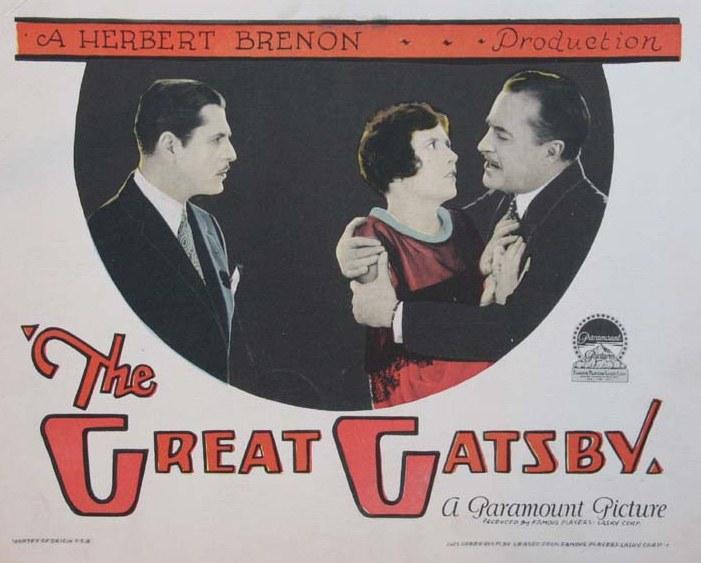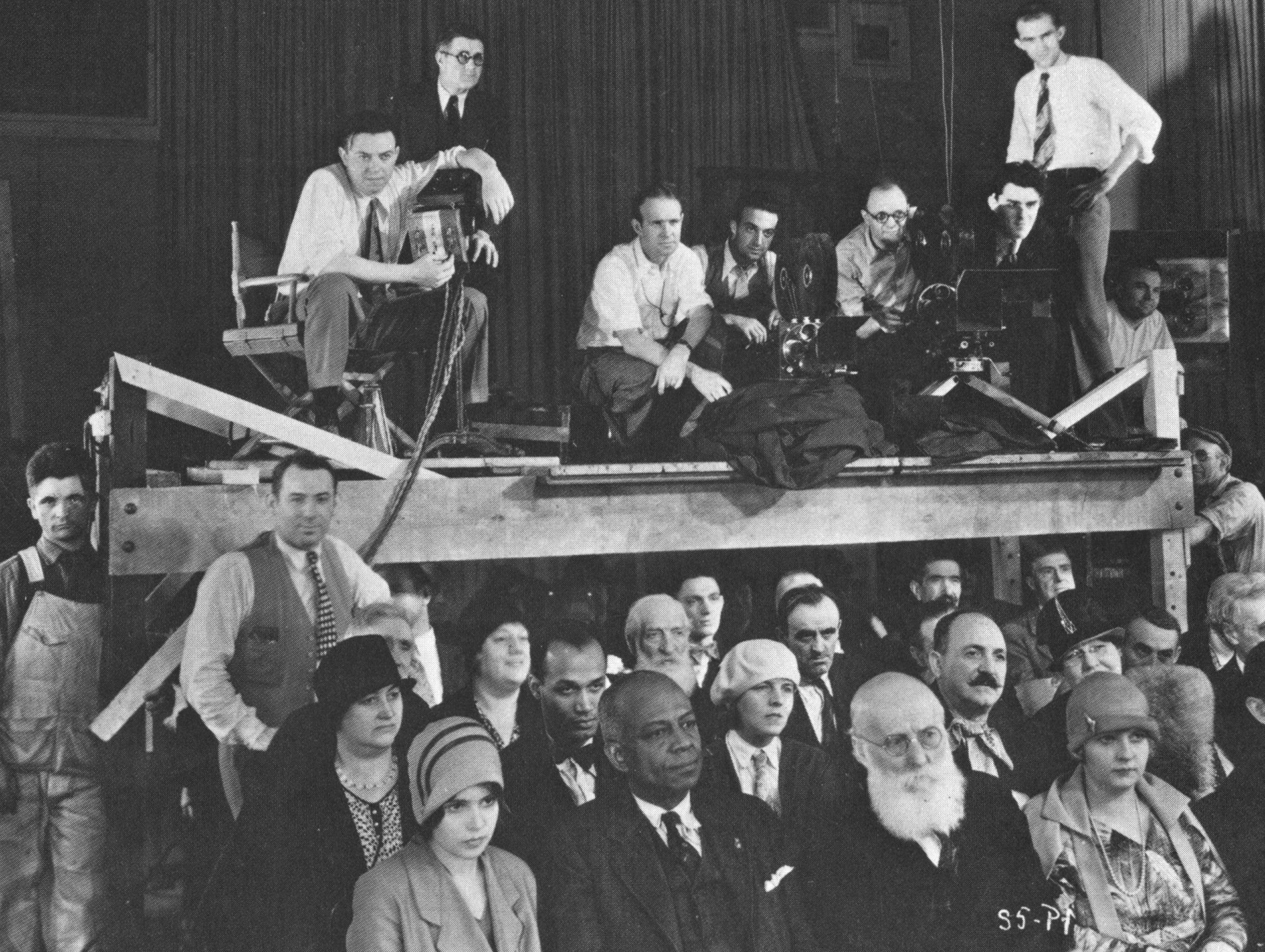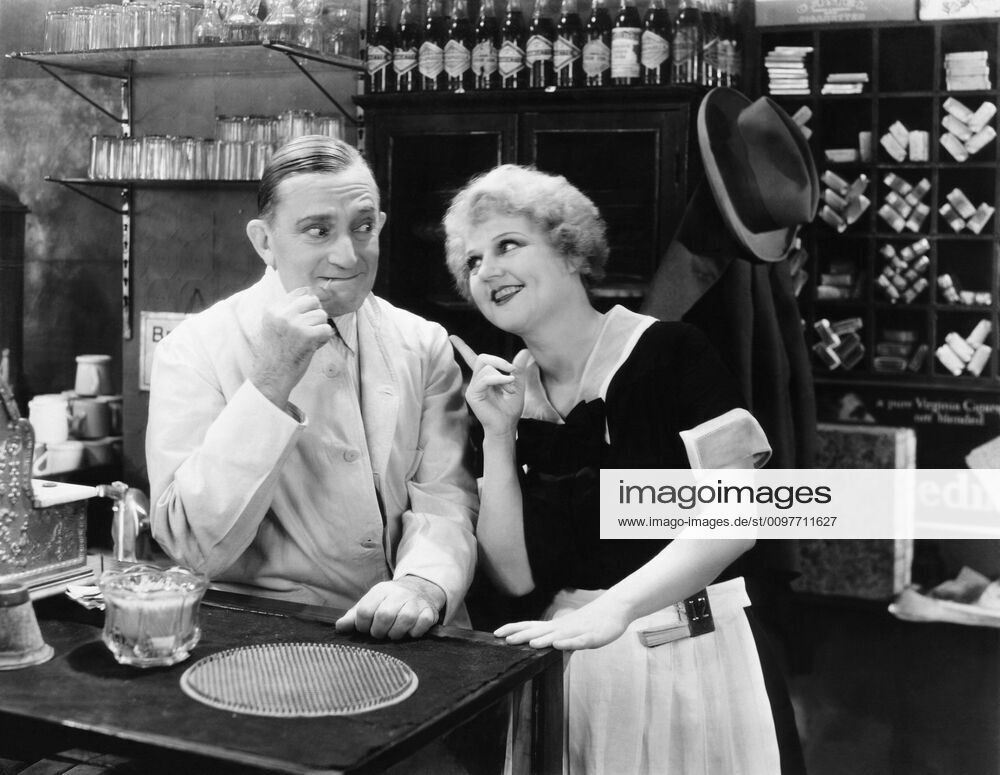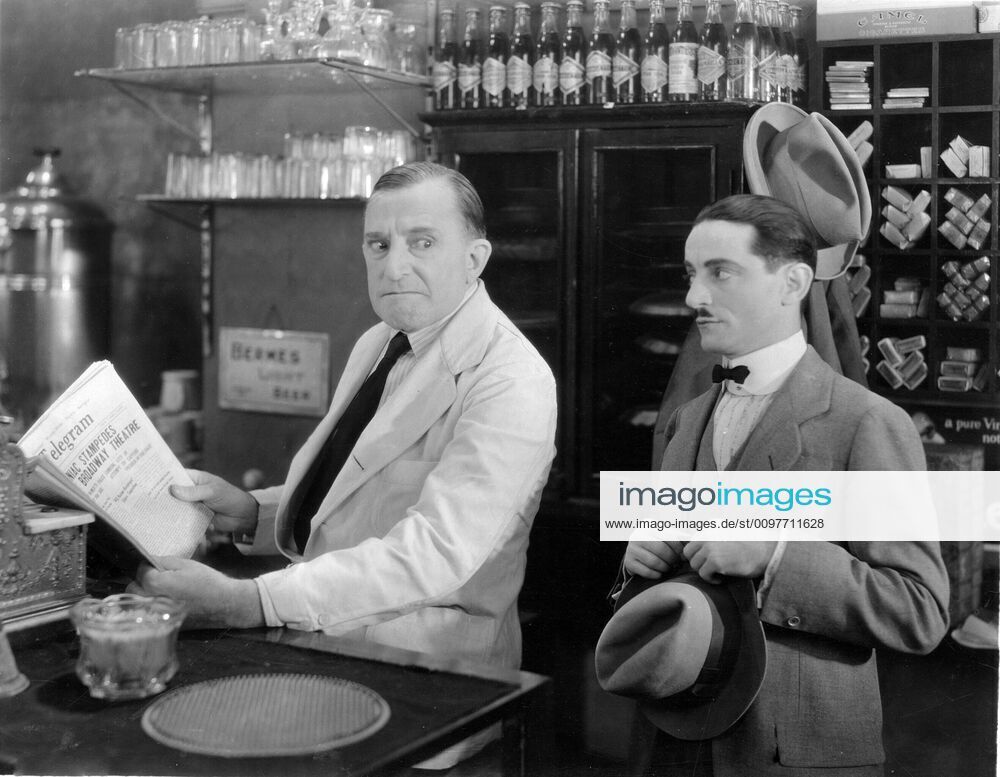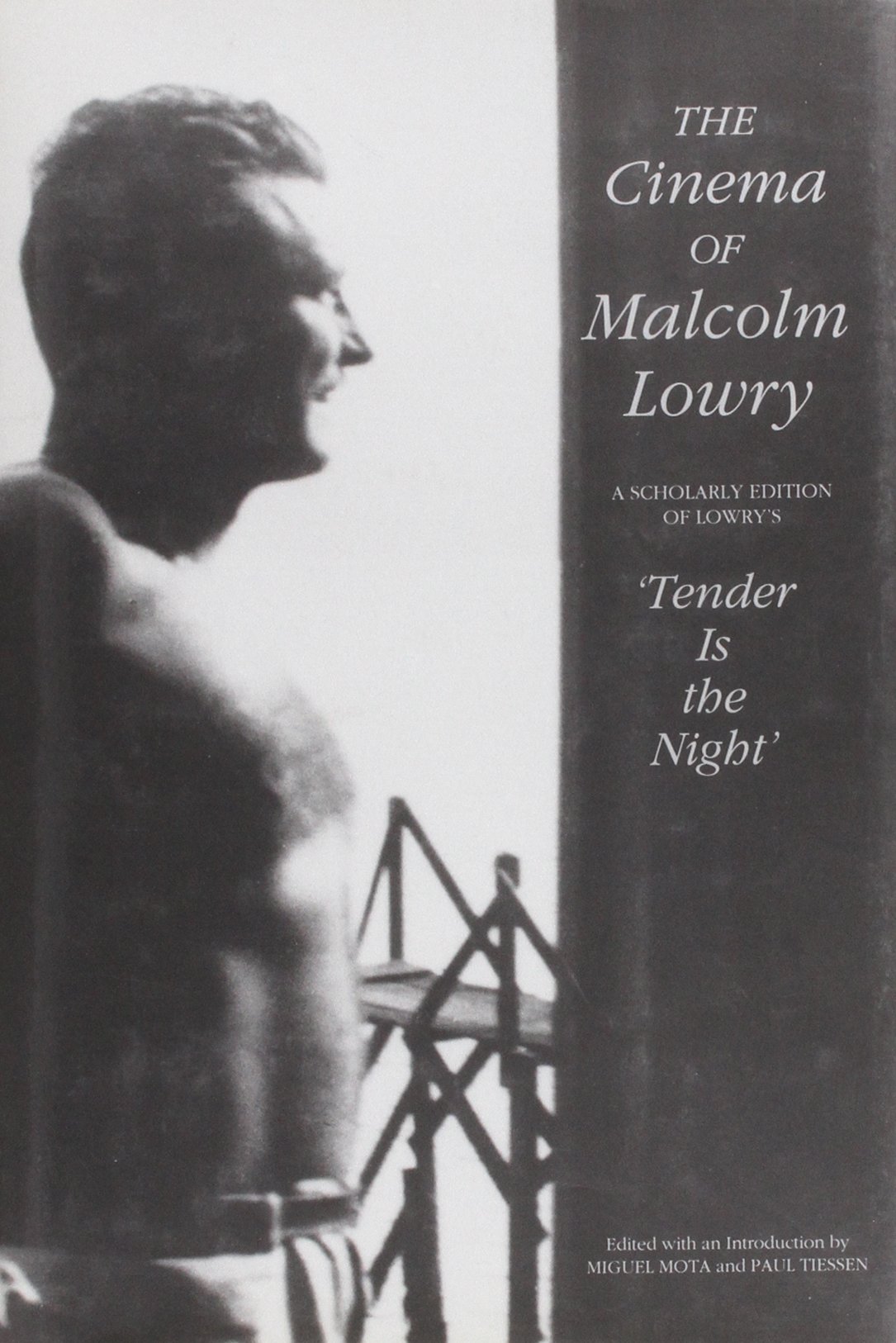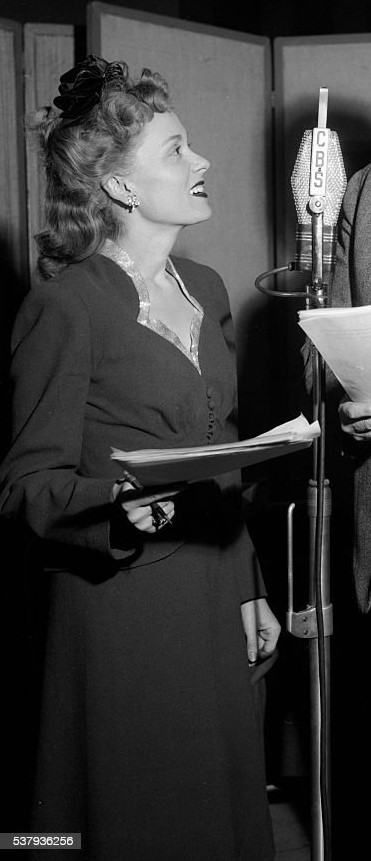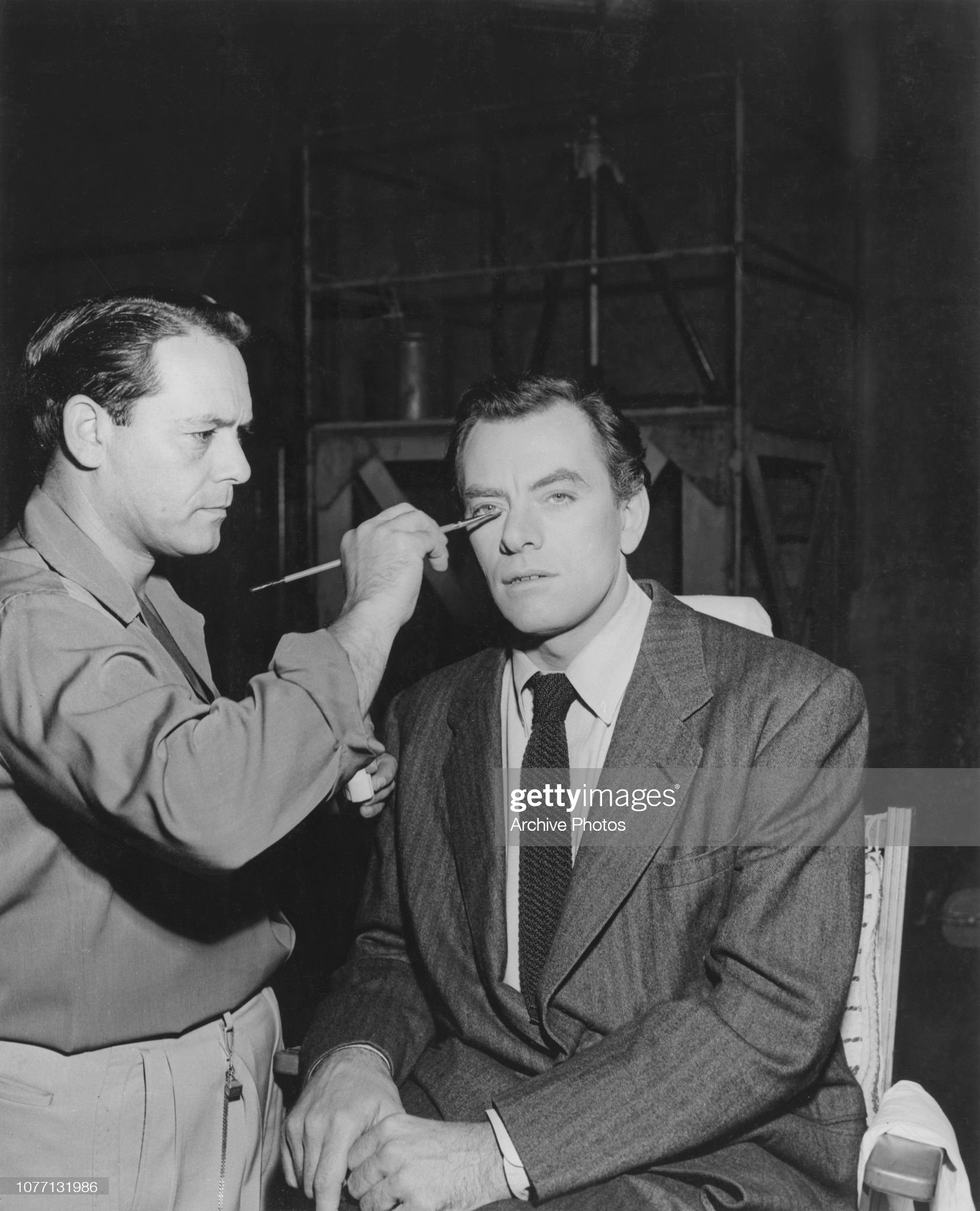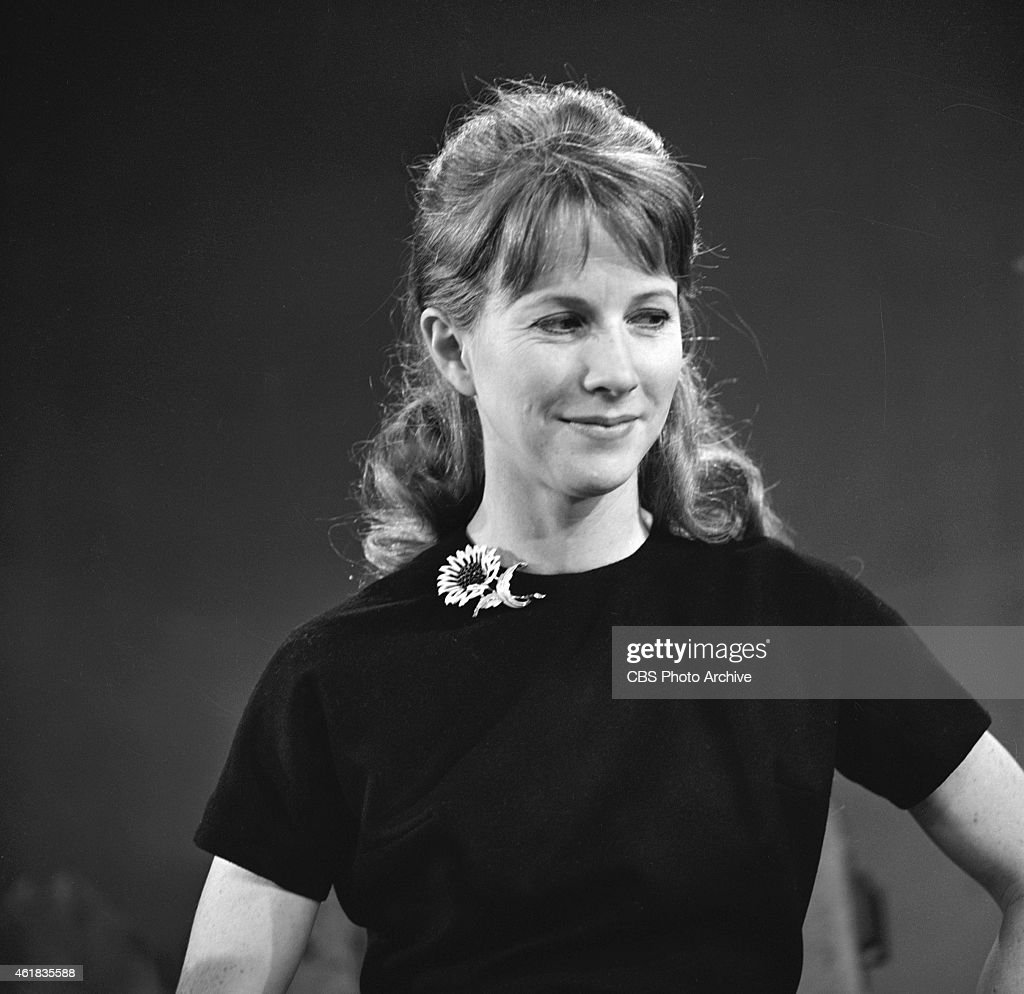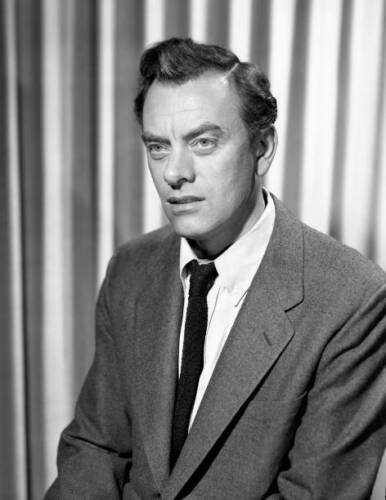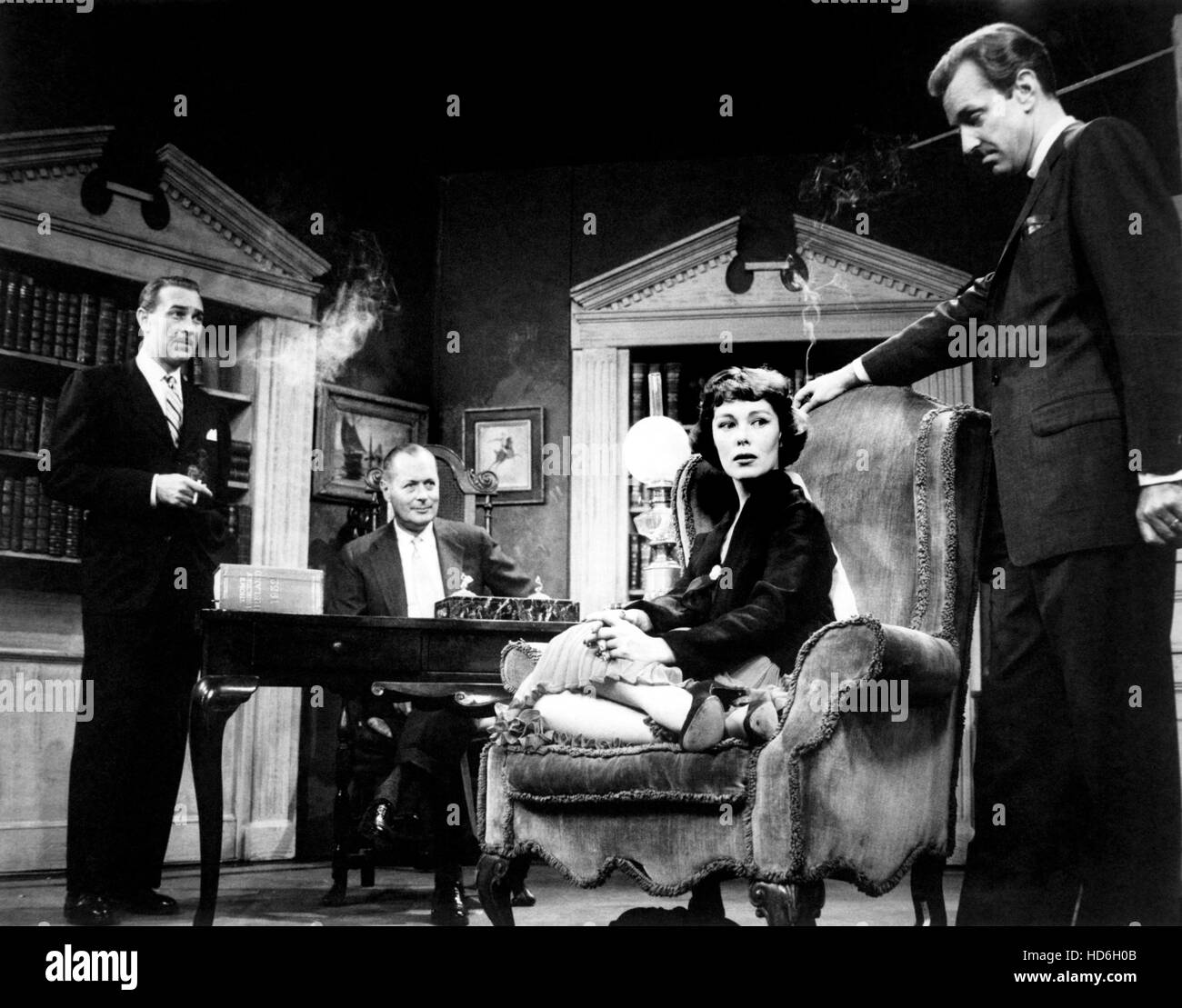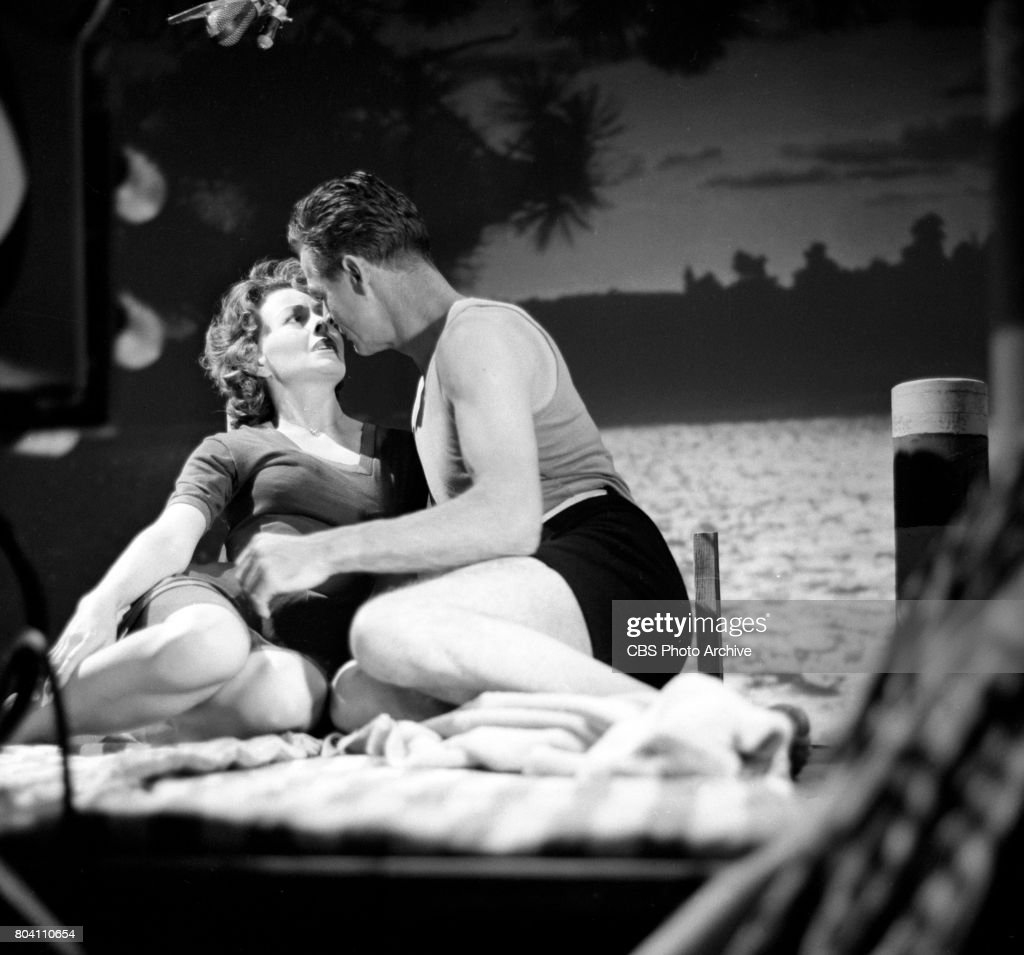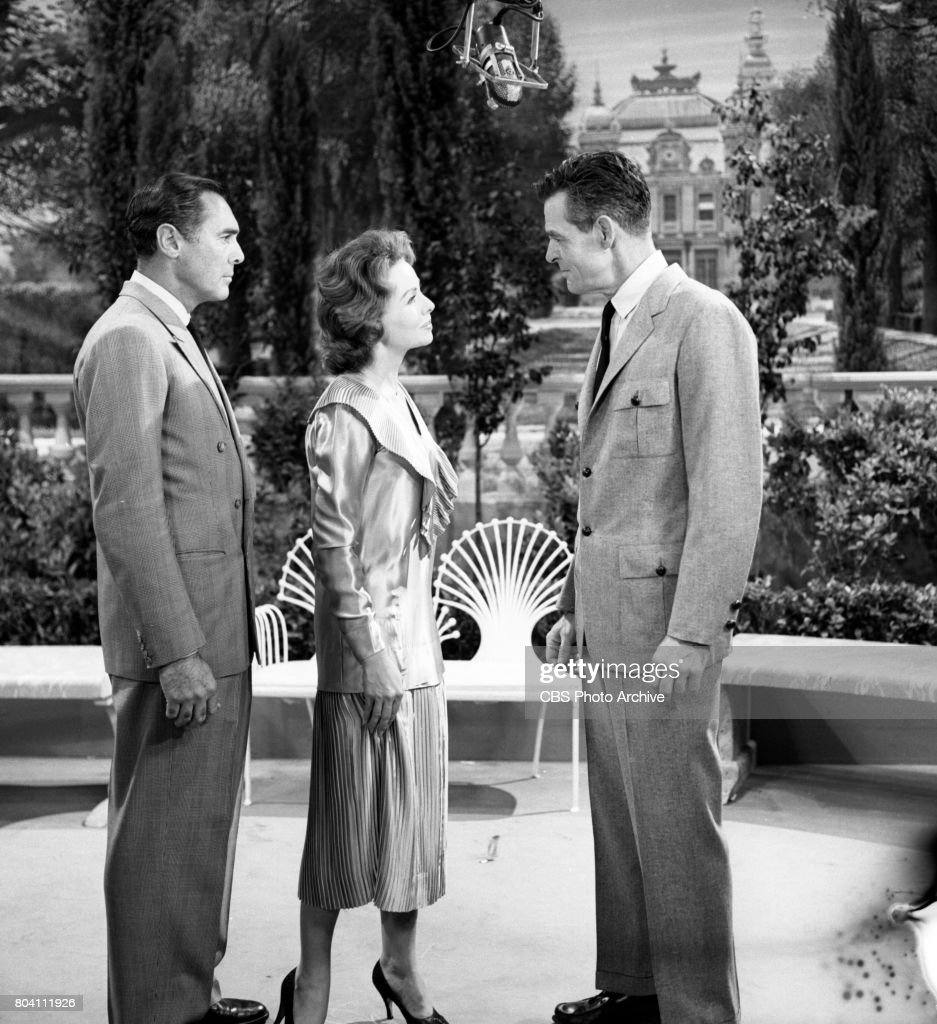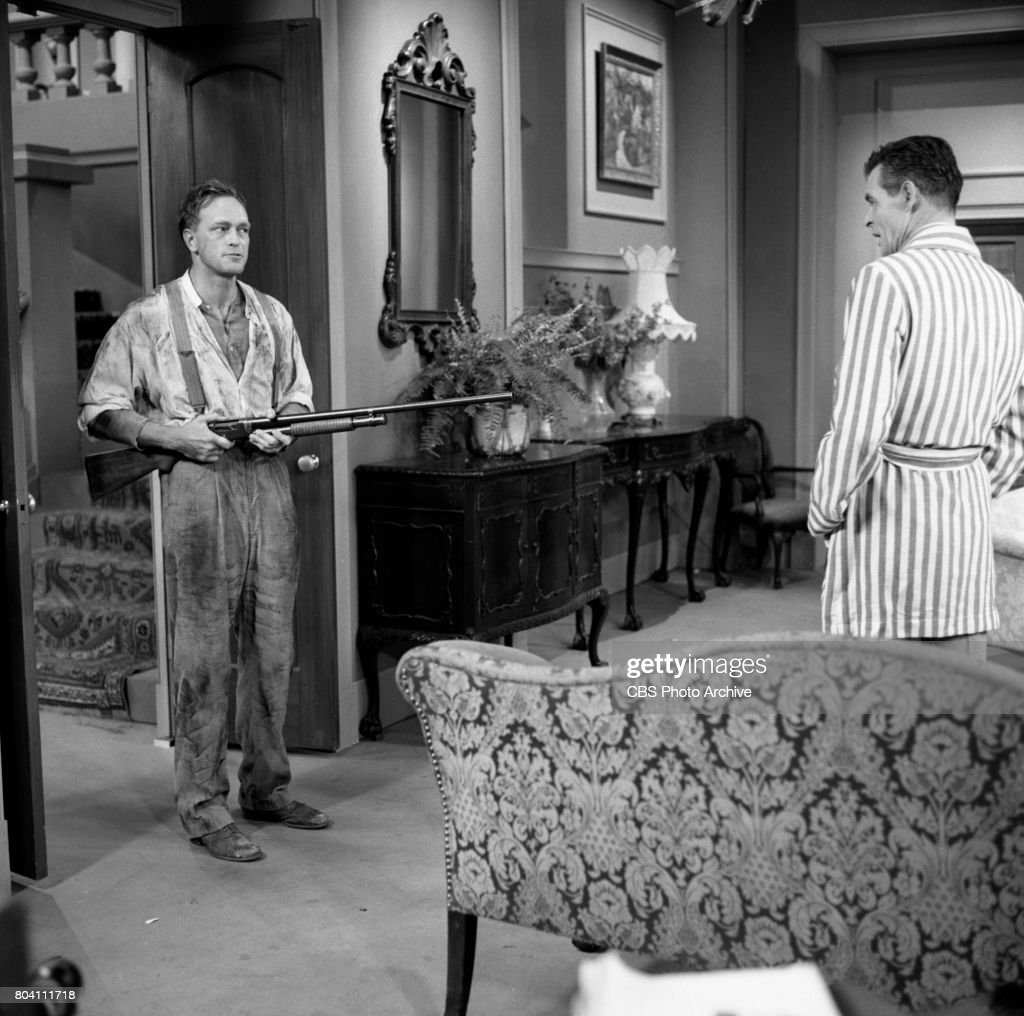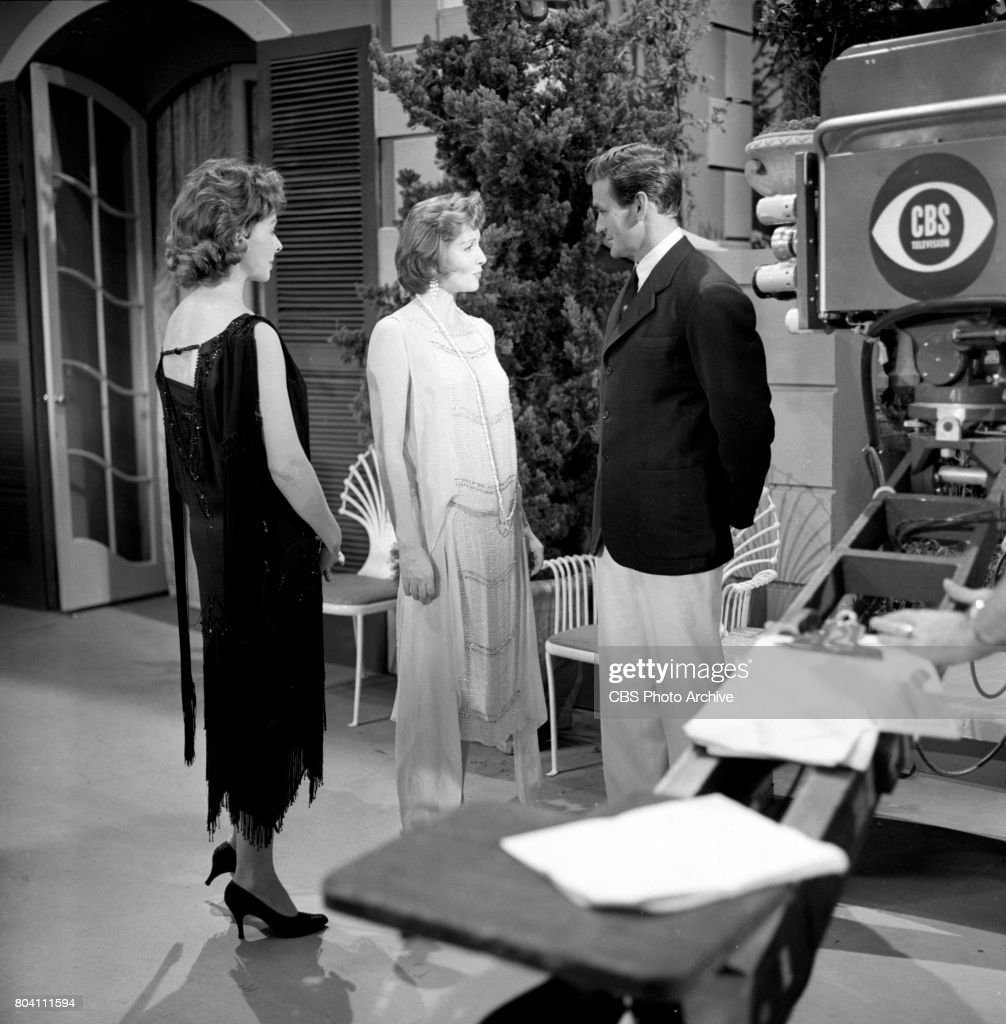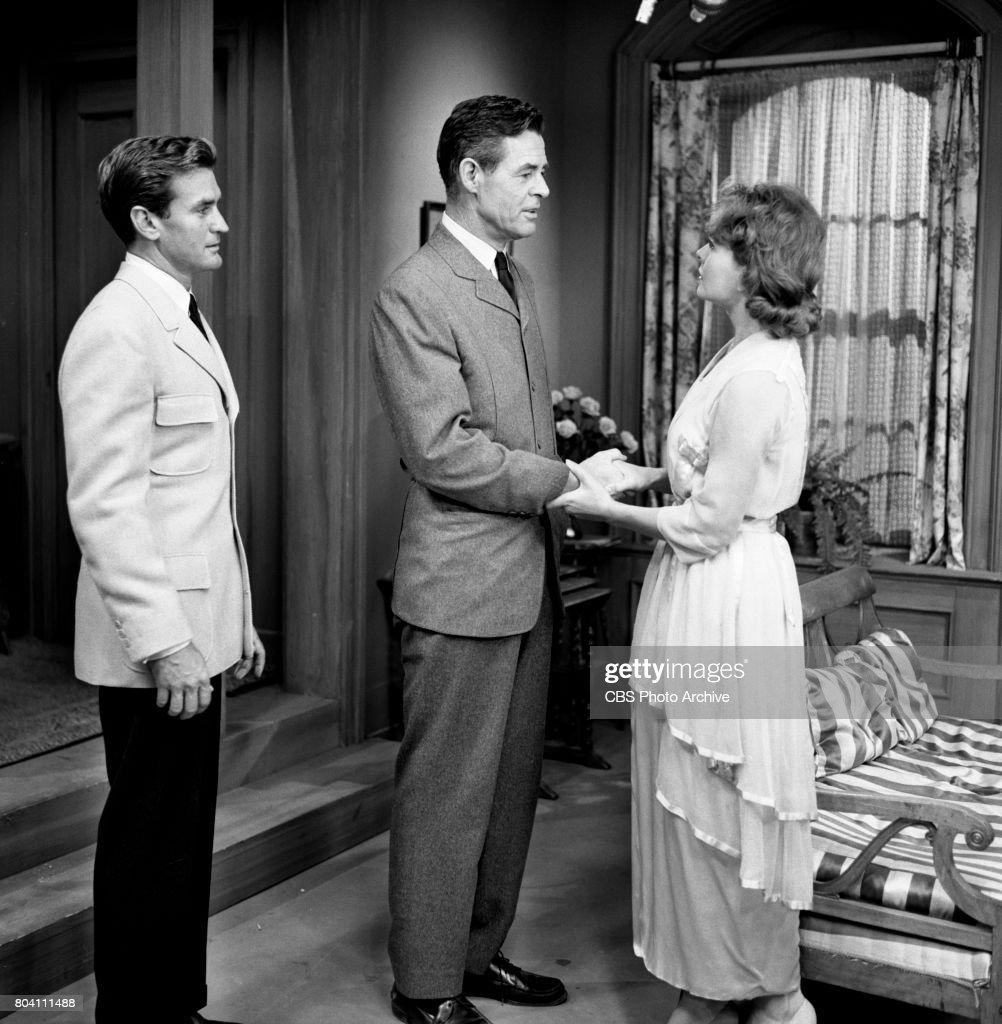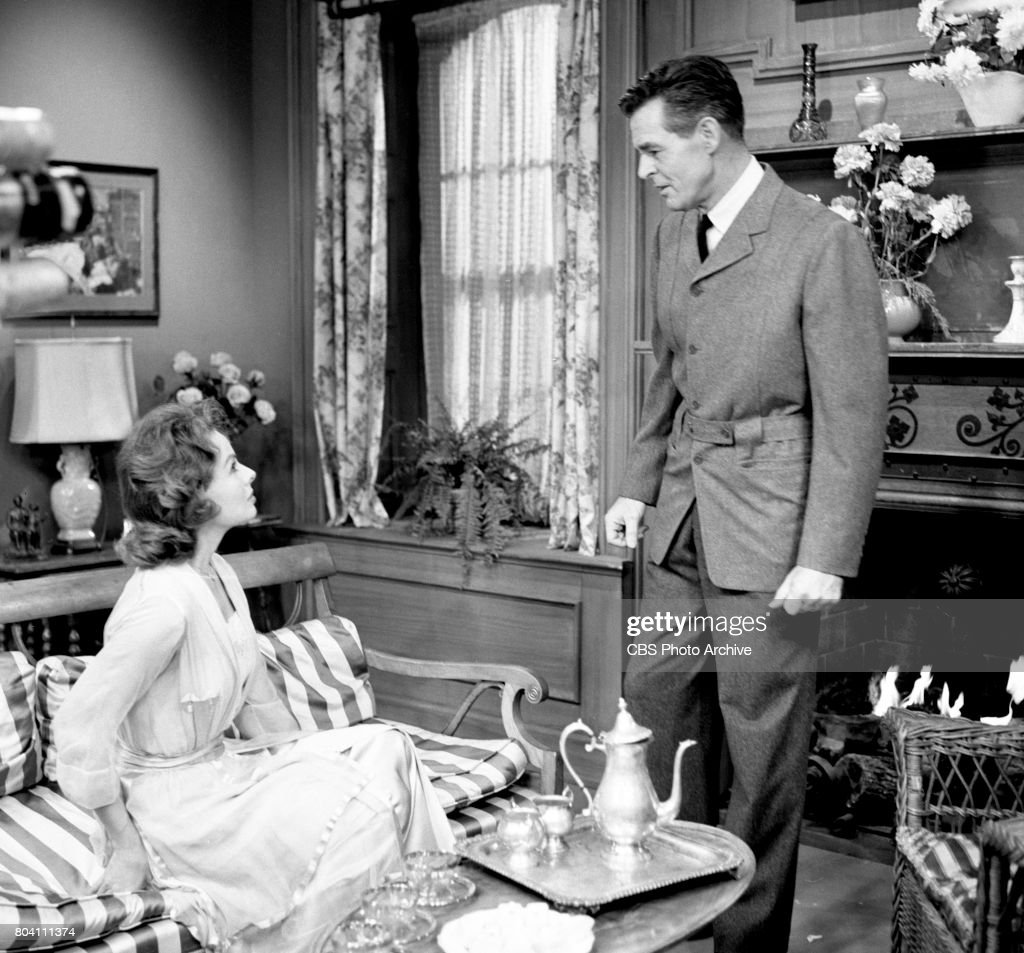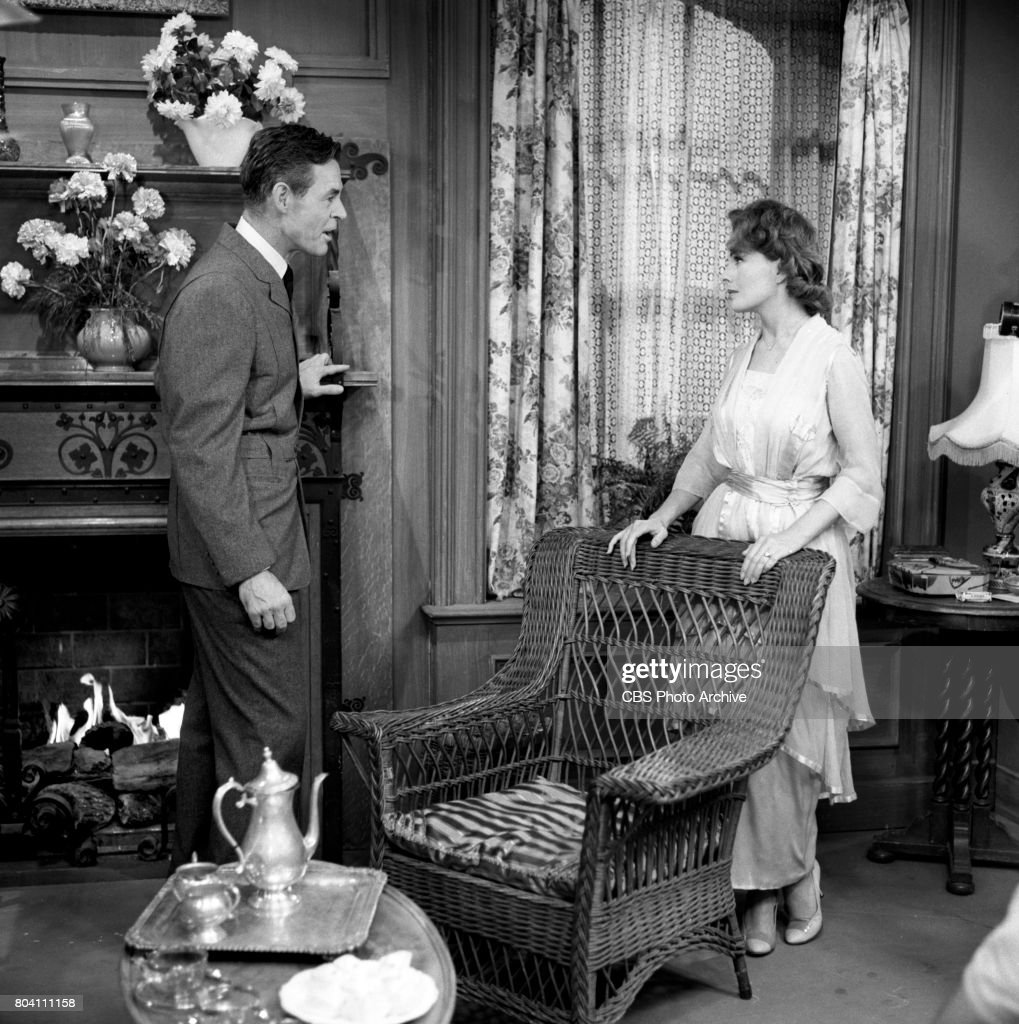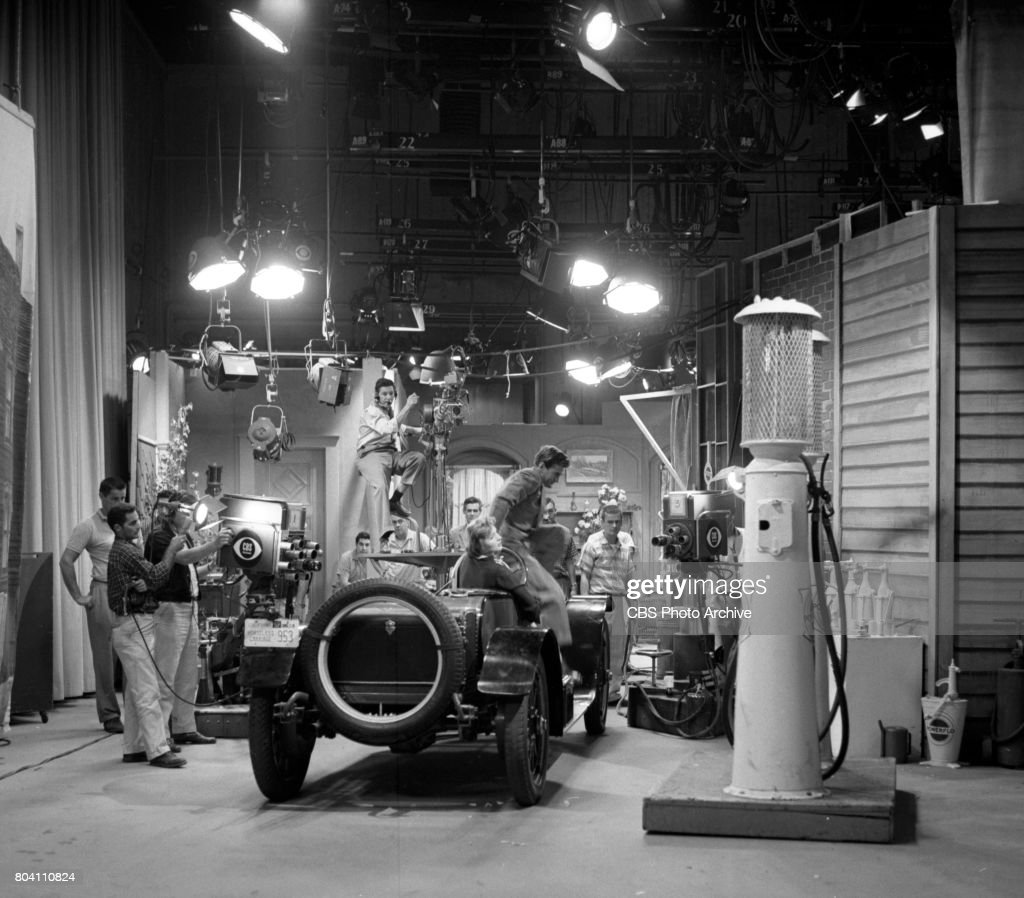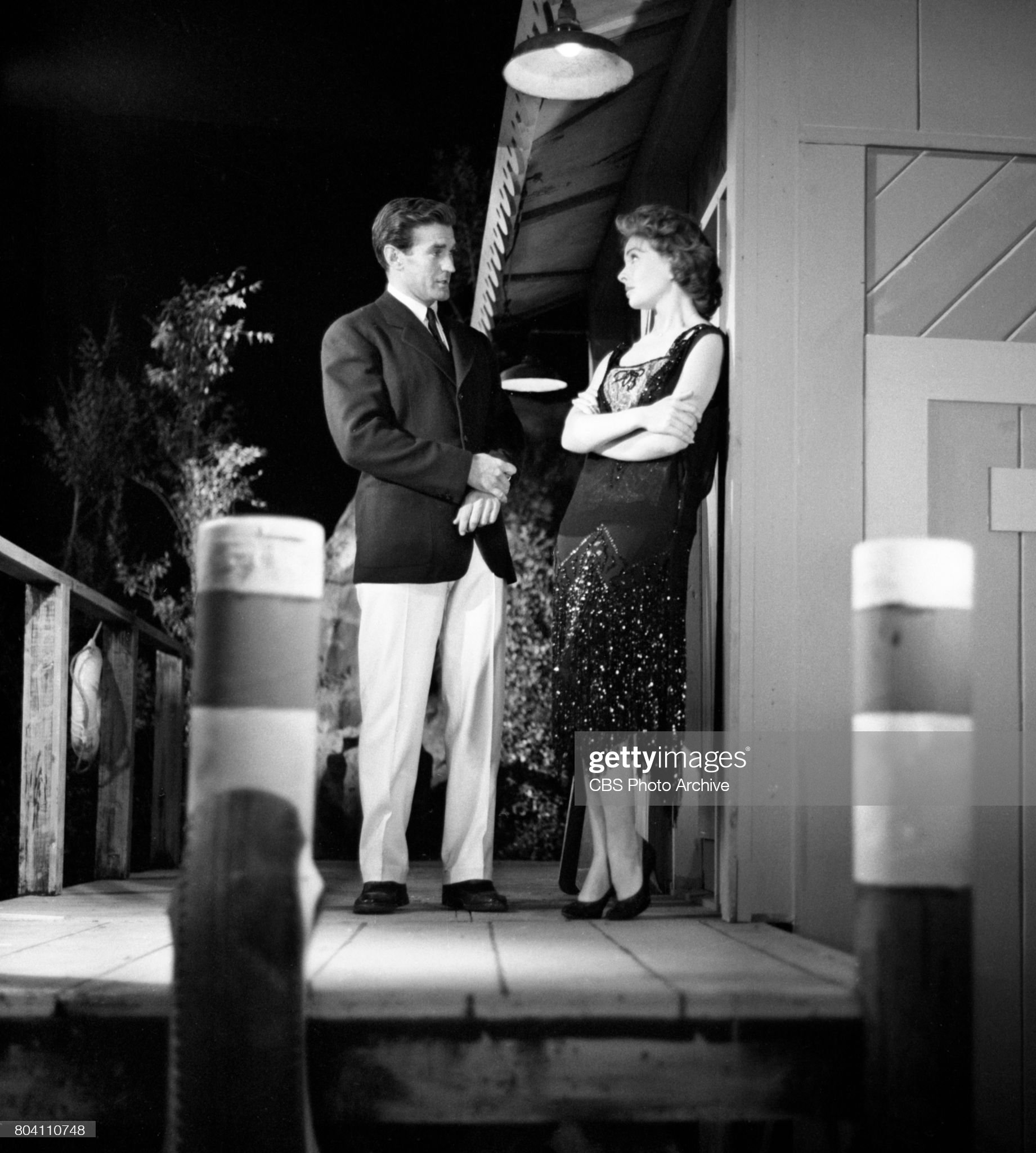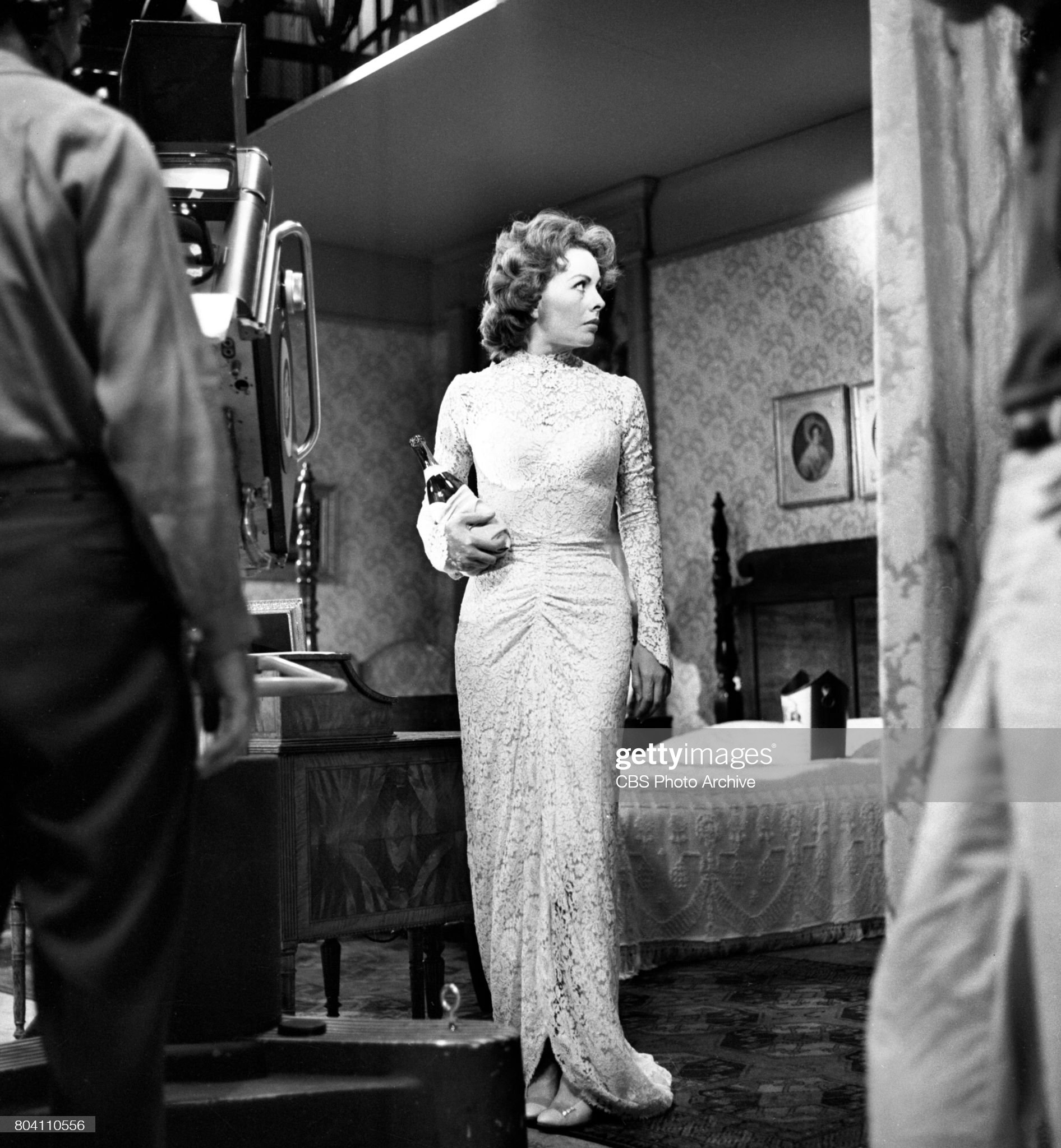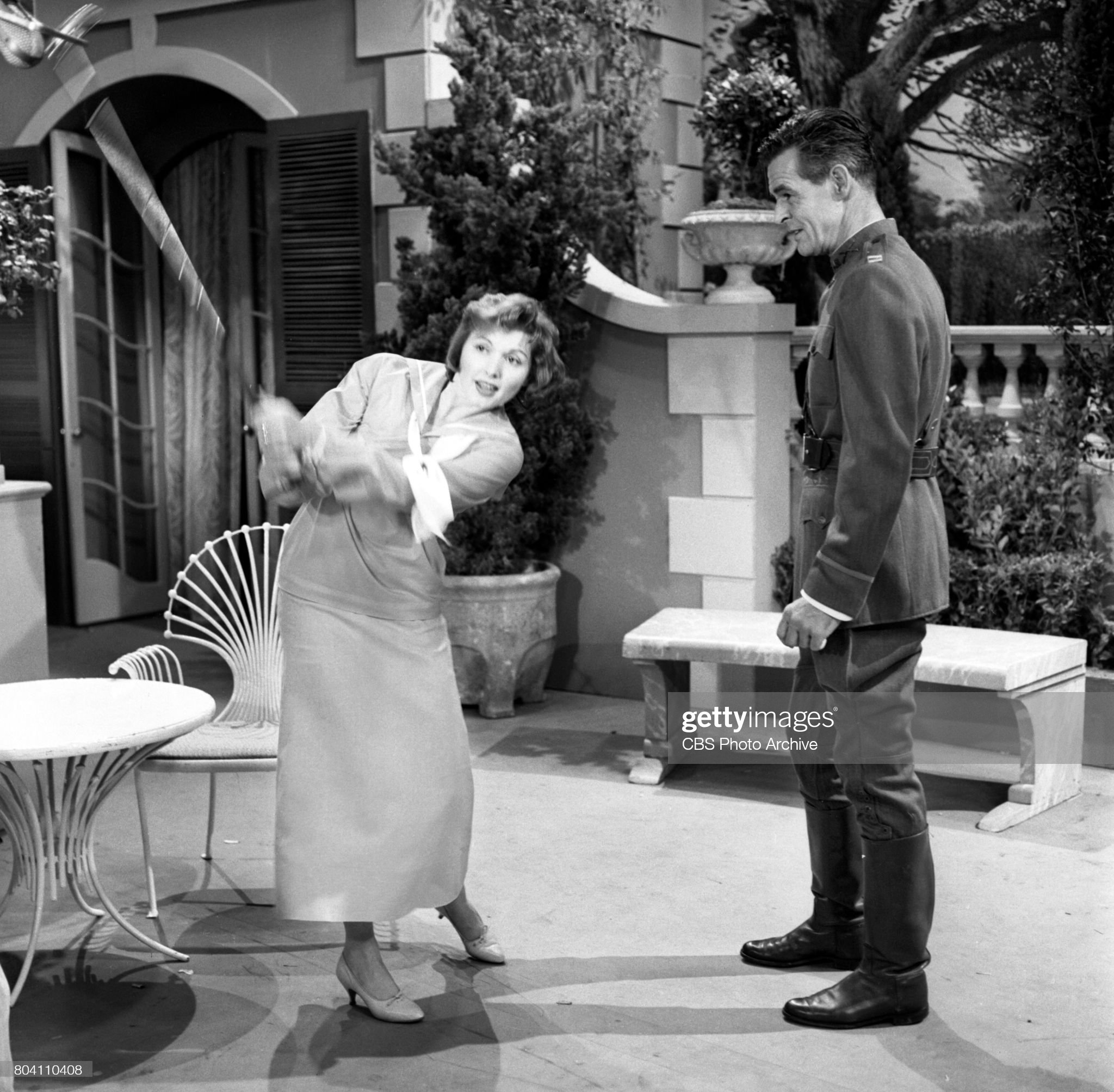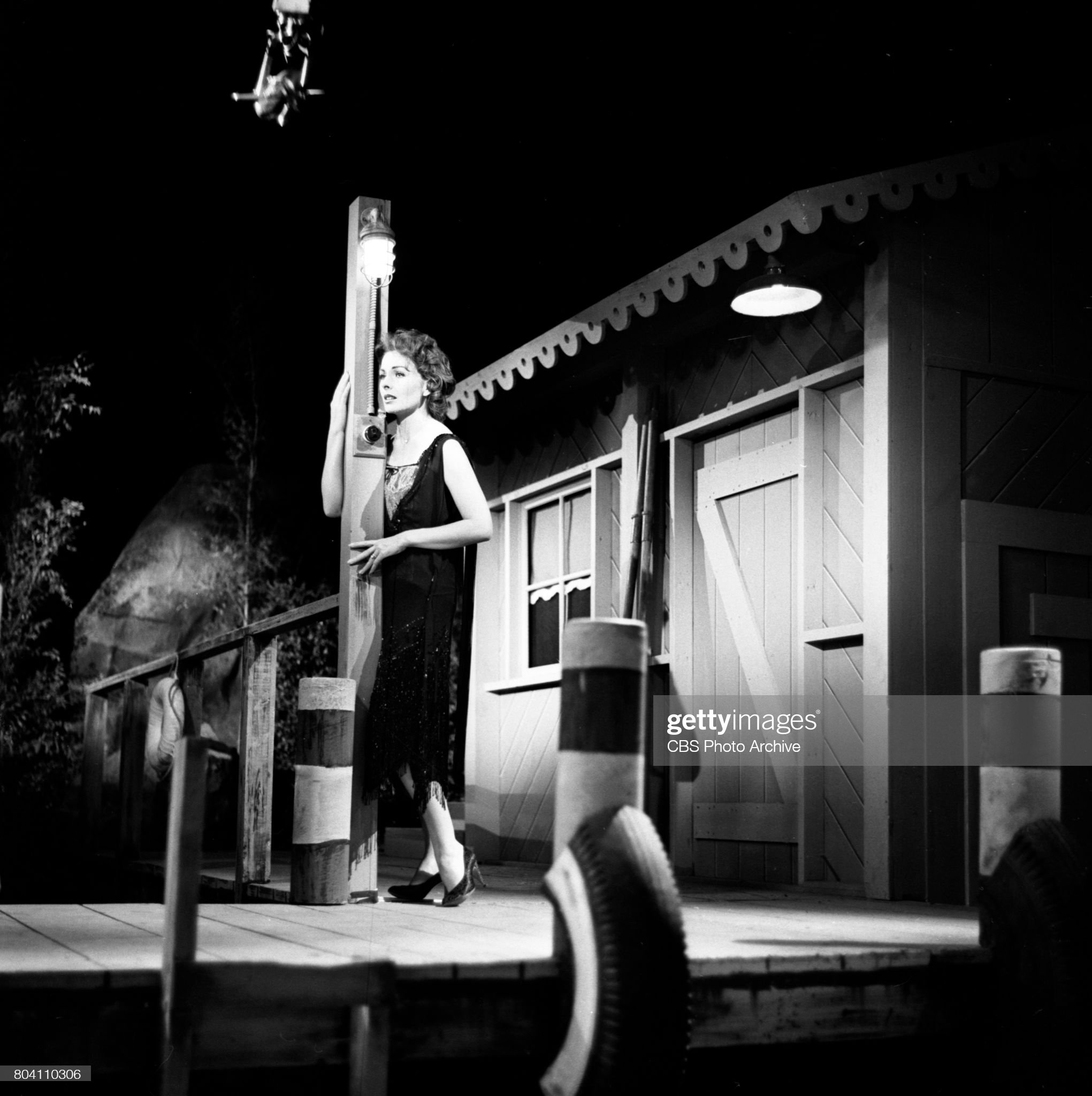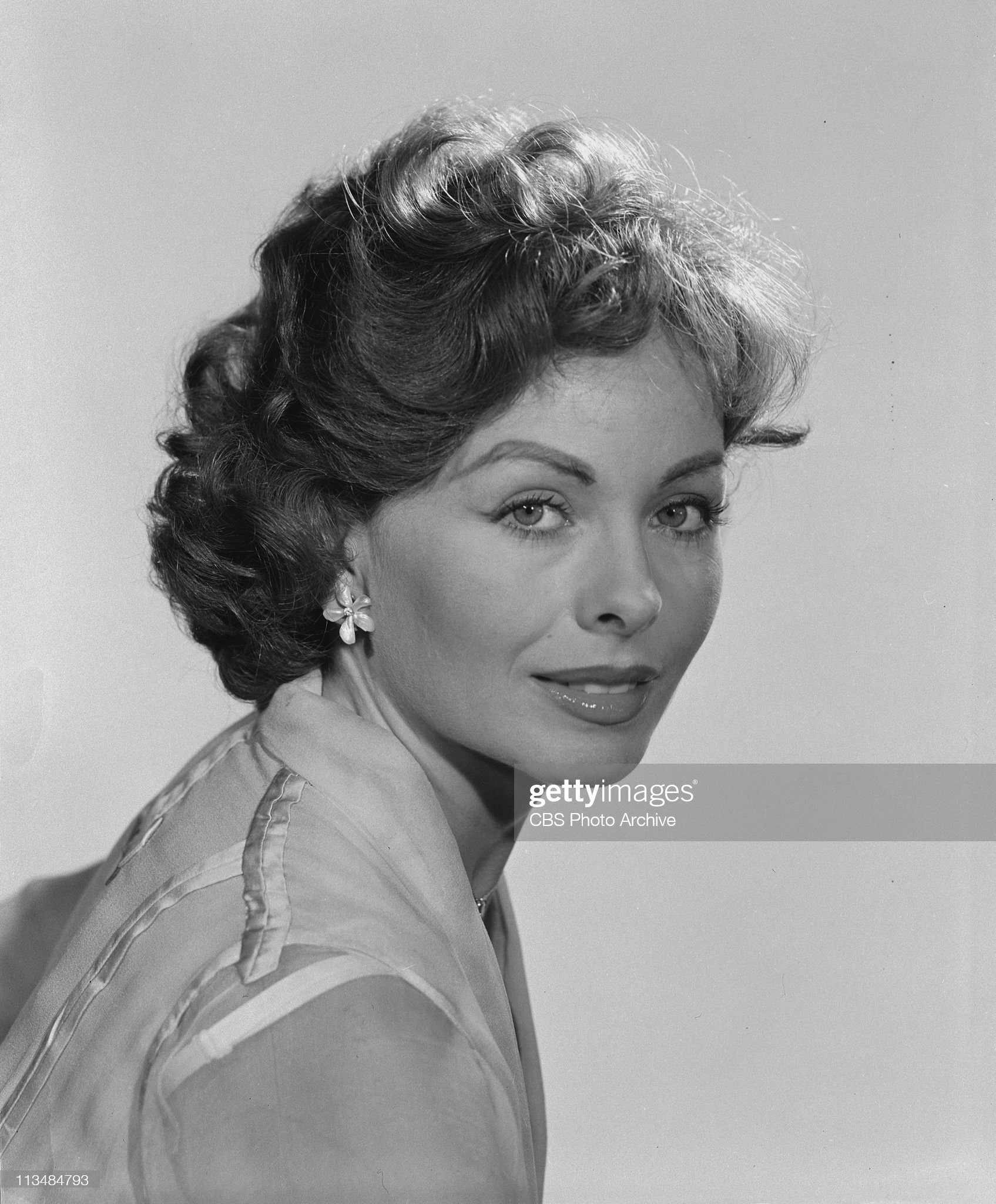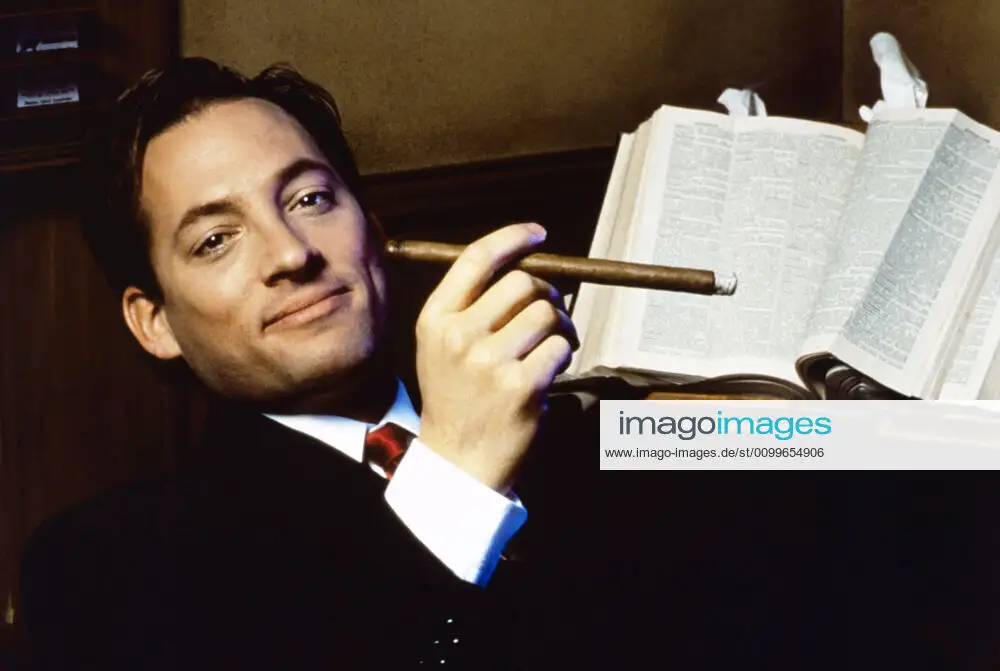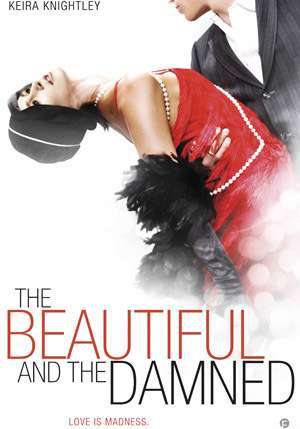
Lost Film Adaptations of F. Scott Fitzgerald's Works: Unavailable Productions
by Anton Rudnev
Here you will find some information on lost film adaptations that were based on F. Scott Fitzgerald's works; all these productions are not available on any media since they were lost or stored in some archive/museum (i.e. not readily available for viewing).
The order is chronological.
The Chorus Girl's Romance (1920)
This film is preserved in Cinemateca Brasileira under the title Da-me um beijo, sim? [portuguese for Give me a kiss, right?] and the year of production is stated as 1923. The copy exists in The Museum of Modern Art (MoMA) also.
Produced by: (silent movie).
F. Scott Fitzgerald's work adapted: Head and Shoulders.
Director: William P. Dowlan; Producer: .
Starring: Gareth Hughes, Viola Dana, Phil Ainsworth, William Quinn, Jere Sundin, Sidney De Grey, Lawrence Grant, Tom Gallery, Edward Jobson.
Running time: 45 minutes (running time of the survived copy).
Publicity material for The Chorus Girl's Romance
Build Cabaret for Dana's Play.
No Resort On Coast Fill Requirements for "The Chorus Girl's Romance."
Rather than resort to the usual method of photographing large theatre and restaurant scenes in public resorts of the character. William C. Dowlan, director of "The Chorus Girls Romance." Viola Dana's forthcoming Metro production decided to built the interior of the cabaret, as called for in the 'script upon one of the immense stages at Metro's West Coast Studios in Hollywood.
No cabaret in Los Angeles is of sufficient size to repesent one of the shimmy eat drink refuge places in New York the locale of the story, and Mr. Dowlan was determined not to misrepresent on the screen. By erecting a special setting he obtained an exact reproduction of one of New York's famed cafes and the visitor upon the set might well imagine himself amid the joys of night life in Gotham.
"The Chorus Girls Romance" is declared to afford Viola Dana the best opportunity she has had in a long time to display her skill as a deft comedienne and an accomplished dancer. From the Saturday Evening Post short story "Head and Shoulders," by F. Scott Fitzgerald, "The Chorus Girl's Romance" tells of the winning of a studious college boy's heart by a visiting chorus girl, and "shimmy" expert their subsequent marriage, trials and tribulations and final complete happiness and congeniality.
Jasper Weekly Courier (July 9, 1920)
"The Chorus Girl's Romance" Viola Dana in a Most Original Metro Feature
Directed by Wiliam C. Dowlan.
Released by Metro.
Marcia Meadows … Viola Dana
Horace Tarbox … Gareth Hughes
Steve Reynolds … Phil Ainsworth
P. P. Anderson … William Quinn
Betty Darrell … Jerre Sundin
Fred Ward … Sidney De Grey
Jose Brasswine … Lawrence Grant
Charlie Moon … Tom Gallery
Dr. Tarbox … Edward Jobson
F. W. Jordon … Martyn Best
Aunt Emma … Anna Shaefer
Miss Wilson … Dorothy Gordon
Prof. Dillinger … Wm. Mong
Originality, that rarest of all qualities in motion picture stories, is the outstanding feature of " The Chorus Girl's Romance" in which Metro is presenting the sprightly Viola Dana and a cast of uniform excellence. To F. Scott Fitzgerald, the author of the original story from which the picture was adapted, must be given a large share of the credit for the general merit of the production, though of course a cast which includes besides the star, Gareth Hughes and Tom Gallery and others equally popular, speaks for itself.
The story opens when a Yale student plans to horrify his bespectacled cousin, Horace, by having a chorus girl in his room when he comes home. The plan works very well except that Horace and the girl are immediately attracted to each other, though poor Horace cannot quite reconcile himself to her shimmying shoulders before the footlights.
However, much to everybody's surprise, they are married. Horace's father is deeply disappointed and sails for Europe without making any financial arrangements for his son. So Horace determines to make a fortune by a great book he is planning to write. In the meantime, however, they must live. He gets a job, but his scholarliness loses it for him, and his wife goes back to her dancing.
One night as she is leaving the theater, a former admirer insults her, and in trying to defend his wife, poor Horace is beaten to a pulp. This Mrs. Horace cannot stand for, so she sends Horace to a gymnasium where he works like a Trojan and eventually develops such strength and skill that he is offered a job as a trapeze performer.
Of course he refuses haughtily, because there is his book. But the publishers are not so keen about the book as Horace had hoped and it comes back with a neat rejection slip. To make matters worse, Mrs. Horace announces that an addition to the family is soon to be expected, and money must be forthcoming. So in desperation Horace becomes a trapeze performer. Mrs. Horace, having plenty of time and inspiration starts writing her diary in slang, and eventually it is published with great success. When the baby is born, Horace's father returns from Europe and finds conditions very much changed.
Instead of his son making a fortune as a writer while his wife cavorts before the footlights, it is the wife who is the literary genius while Horace does the cavorting. But everybody is happy and so nothing else matters.
Kelley.
Motion Pictures, Studio & Directors-August 14, 1920
Toe Dances And Shimmies Also
Viola Dana's Feet As Active As Shoulders In "Chorus Girl's Romance"
Take it from Viola Dana, it's easier to make one's shoulders misbehave than to make one's toes perform.
And the dainty Metro star knows. In "The Chorus Girl's Romance," her newest special production shown today and three days at the Utah theatre, several shimmy dances and a faithful re-production of a Pavlowa toe dance are included in the list of novelties contributed to the picture by Miss Dana.
Incidentally. Miss Dana claims credit for bringing the only altar actually to do a toe dance in a picture. Heretofore this difficult feat has been managed by a professional dancer who has "doubled" for the star, or was eliminated from the story by the director before it was filmed.
When the production of the present picture first was undertaken it was planned to have only the shimmy dance, largely because of the difficulty of arranging for the "long shots" that are required when a double performs for a star.
"But we can have the toe dance," protested Miss Dana. "The picture really requires it and I'm going to be a real dancer for this picture."
Then it developed that the star had been practicing with toes as well as shoulders during the preparations for this production. The result was that she appeared before the camera the following day armed with a dainty pair of the short vamped, stuffed toed slippers that are required for this acrobatic dance.
"It really isn't as new to me as one might imagine," she explained later. Several years ago, when I was with Edison, I appeared in "The Cossack Whip" which called for a toe dance I had been interested in dancing all my life and I Immediately seized the opportunity to make use of the knowledge I had picked up here and then during my picture work I never have given up dancing, as it is a valuable asset to me in nearly every picture in which I appear. In fact almost any experience in life is of value to a screen star."
One of the bizarre costumes is composed almost exclusively of ostrich feathers formed Into a cross between a Hawaiian dancer's skirt and a feather duster.
"The Chorus Girl's Romance" is a picturization of F. Scott Fitzgerald's "Head and Shoulders," which recently was published in The Saturday Evening Post.
The Ogden Standard Examiner (August 29, 1920)
Programs for the week - Sun-"A Chorus' Girl's Romance."
Cast of Characters.
Marcia Meadows … Viola Dana
Horace Tarbox … Gareth Hughes
Steve Reynolds … Phil Alnsworth
P. P. Anderson … William Quinn
Betty Darrell … Jarre Sundin
Fred Ward … Sidney De Grey
Jose Brasswine … Lawrence Grant
Charlie Moon … Tom Gallery
Dr. Tarbox … Edward Jobson
Viola Dana is the luminary on the screen at the Sun theater this week in "A Chorus Girl's Romance," adapted from F. Scott Fitzgerald's story, "Head and Shoulders," that tan not long ago in the Saturday Evening Post.
The story has to do with an odd romance between a chorus girl, whose show is trying out in New Haven, and Horace Tarbox, a prodigy in scholarship.
It seems that some of Horace's more worldly friends persuaded Marcia to go to his college rooms and see what would happen. What did happen is not what either Marcia or Horace or Horace's friends or even the audience imagined. The consequent events form one of the freshest and sprightliest and most human stories seen on the screen of the picture theater in many a day.
As an added attraction to Miss Dana's picture. Buster Keaton, comedy star, appears in his best and latest offering, "Three Weeks."
***
Take it from Viola Dana, it's easier to make one's shoulders misbehave than to make one's toes perform. The dainty star contributes some sprightly shimmy steps and shakes in her list of novelty offers in 'The Chorus Girl's Romance," playing at the Sun theater this week.
***
Muse-"A Chorus Girl's Romance," "The Whisper Market," "The Street Called Straight," and "Jes' Call Me Jim."
Deep drama of intrigue, scandal and adventure is the general trend of this week's program of pictures at the Muse theater.
Viola Dana in "A Chorus Girl's Romance," however is somewhat off the order of drama, as comedy is woven cleverly into the plot. The picture will be shown today.
Basil King'' successful story, "The Street Called Straight," is the chief attraction at the Muse tomorrow and Tuesday. It is a story of a great love born of tragedy, of a woman's soul transfigured and redeemed by a man's sacrifice. Naomi Childers and Milton Silis play the leading parts.
A mystery and adventure story constitutes the interest in "The Whisper Market," starring Corime Griffith. A band of blackmailers who attempt to ruin the character of the wife of an American vice consul are the figures that form the plot of the story. The picture shows Wednesday and Thursday.
Will Rogers in "Jes' Call Me Jim" has come into his own with a rush that is one of the miracles of photoplay history. This homely, hardbitten, sun-tanned wit of the western plains displays some honest-to- goodness acting in the play, "Jes' Call Me Jim" plays Friday and Saturday at the Muse.
The Omaha Sunday Bee (October 3, 1920)
At the Opera House - "The Chorus Girl's Romance."
An exact reproduction of the lobby and dining room of the Taft hotel in New Haven was constructed on one of the large enclosed stages at Metro's west coast studios in Hollywood, Cal. This massive setting was used as a background for much of the lively action in "The Chorus Girl's Romance," the Metro special production starring Viola Dana in the role of a lady of the chorus whose specialty is dancing the shimmy. The picture will be seen locally Tuesday at the opera house.
Photographs were obtained of the interior of the famous hostelry frequented by the undergraduates of Yale university, and the plans for the setting were drawn to comply exactly with the real hotel. The set occupied practically all the floor space of one of the three big stages in the studios and was complete in every detail from the swinging doors at the entrance to the two elevators, the cloak rooms, the desk and balcony.
Much of the action of "The Chorus Girl's Romance," which is an adaptation by Percy Heath of F. Scott Fitzgerald's story, "Head and Shoulders," which appeared in the Saturday Evening Post, takes place in New Haven. The hotel interior is only one of several elaborate settings built for the production. A large theatre interior and a cabaret are among the other big scenes.
William C. Dowland directed Miss Dan in "The Chorus Girl's Romance" and John Arnold photographed the picture. Gareth Hughes, Tom Gallery, Lawrence Grant and Edward Jobson all have important parts in support of Miss Dana.
The Herald and News (October 26, 1920); also in The Times (December 6, 1920 - In the theatres - West End).
The Husband Hunter (1920)
This film is lost.
Produced by: Fox Entertainments (silent movie).
F. Scott Fitzgerald's work adapted: Myra Meets His Family.
Director: Howard M. Mitchell; Producer: William Fox.
Starring: Eileen Percy.
Running time: 50 minutes (5 reels).
The Off-Shore Pirate (1921)
This film is lost.
Produced by: Metro Pictures Corporation (silent movie).
F. Scott Fitzgerald's work adapted: The Off-Shore Pirate.
Director: Dallas M. Fitzgerald; Producer: .
Starring: Viola Dana.
Running time: 60 minutes (6 reels).
The Offshore Pirate
(story version written for Screenland with the permission of Metro Production)
by Ralph H. Leek
A sharp turn in the road, a cruching of gravel, and Ardita Farnam brought her roadster to an abrupt stop to avoid running down two rough individuals who barred the way.
An instant later they solved the mystery of their presence by springing on the running board and grasping the arms of the astounded girl.
“Well?” she demanded, without the slightest trace of fear.
“Just keep quiet and we’ll show you,” came the reply from a gruff voice.
Whereupon expert fingers rifled her bag and removed the rings from her fingers. A brooch at her throat was going the same route when there came an unexpected interruption.
The figure of a tall man lunged from the side of the road. One burly intruder was hurled to the ground, while the other suffered a staggering jolt on the jaw of the sort that removes the fight from the most belligerent individual. Then, while the strangers sought safety in the shadows that skirted the road, the unidentified rescuer made a more leisurely search for the baubles that had aroused their cupidity, restored them to their speechless owner, and touched his hat just as he might have done had he been returning a lost handkerchief to a pedestrian.
For the first time, Ardita was given an opportunity to note the dark eyes and handsome face of the stranger. A slight smile played about his mouth. Amusement rather than admiration seemed to have prompted the curl of his lips. Somehow, the usually self-possessed Ardita was less composed in the presence of this cool individual than while the rough hands of her assailants were seeking out her valuables.
“You—you were simply wonderful,” she began. “I don’t know how to thank you. Please let me——”
But the stranger cut her halting speech short with another of his half-amused smiles.
“It’s of little consequence,” he said, with a wave of his hand. “I am glad to have been of service.”
The notorious Nevkova was brought to her box, presented, and placed in the seat none too gracefully vacated by a member of the Ardita Suitors’ Club.
A moment later he was swinging away into the woods without so much as a glance at the girl. It was a new experience for the beautiful Ardita. Seldom did a man miss an opportunity to bask in her smiles. For a moment she as tempted to lose patience with her handsome rescuer. Then, starting her car, she continued down the road after one lingering glance toward the place where the tall figure had disappeared.
Unfortunately, Ardita’s eyes could not penetrate the darkness of the woods. Otherwise she would have witnessed a far more interesting phase of the little episode than any that had occurred in her presence.
For the two thugs, far from fearing the heroic rescuer of their victim, were calmly awaiting his arrival. And, instead of laying in ambush for him, they greeted him with smiles.
“That was a rather nasty cut you handed me on the beezer,” said the stockier of the two.
“Yes, but you’re getting well paid for it,” came the reply.
Saying which the heroic rescuer delved deep into a trousers pocket, drew out a thick roll of bills and divided them between his two strange associates. Having completed this transaction, he strode away with as little show of interest in them as he had indicated for the beautiful Ardita.
Meanwhile, Ardita was speeding onward, paying more attention to her thoughts of the new variety of male that appeared on her horizon than the steering wheel. For Ardita’s young life thus far had consisted of just one proposal after another. It wasn’t simply that she was young, beautiful and the possessor of a piquant personality. But she was a Farnam—the Santa Barbara Farnams—and as such, a person of importance. Some day she would have the sole right to dispose of the Farnam possessions. So it is easy to see why there were so many who thought she needed a strong man to look after her—and her millions!
Days passed and Ardita neither saw nor heard from the handsome hero of her woodland adventure. Then came the opening of the polo season at Coronado, with its gathering of the cream of Southern California’s upper social circles.
The slightly bored girl was seated in her box, surrounded by the customary swarm of suitors, when she suddenly showed a new interest in life. Seated in an adjoining box, seemingly alone, sat her hero. Ardita leaned forward and smiled.
Whereupon she sauntered over to the wheel and began to manipulate it to the extent of her knowledge of things nautical
“What about this Ivan Nevkova?” he blurted out
But the stranger either failed to see her, or did not recognize the beneficiary of his heroism. At any rate, not a flicker of a smile passed over his face.
“I’m sure you are making a mistake, Ardita,” whispered a youth at the girl’s elbow. “You don’t know that man—you couldn't. That’s Ivan Nevkova—the notorious Ivan—the least said the better.”
All of which shows how young the boy was, how little he knew of women generally, and this one specifically.
“But I do want to know him,” replied Ardita. “Please introduce him. He interests me.”
The task was far from his liking, but Ardita usually had her way. So the notorious Nevkova was brought to her box, presented, and placed in a scat none too gracefully vacated by a member of the Ardita Suitors’ Club.
This time Nevkova wasn’t so sparing with his smiles. When Ardita told him that she had been seeking an opportunity to speak to him—to thank him for his generous action in his behalf—he belittled his own deeds and deftly switched the subject to something that seemed to occupy a more important place in his mind. So successful was he in his choice of subjects that Ardita found herself held in his spell—held until all the other members of her party had grown tired and had abandoned her to her new favorite.
As for Ardita—well, she was sure that she had discovered what that thing called love actually was.
Ivan lost no time in convincing her that she was right in this belief. Just as he had routed all competitors conversationally while at the polo game, he proved that he could be equally persuasive when armed with a pen. Each morning found one of his characteristic scrawls in Ardita’s mail.
Ardita, who permitted herself to be bored by her luxurious yacht as much as by any of her other toys, was seated in the cabin, deeply engrossed with an unusually fervid appeal from Ivan, when she was interrupted by her uncle.
Uncle John, by the way, was one of those whimsical men of ample wealth, girth and appetite, who permit themselves one hobby. Ardita was Uncle John’s hobby.
Colonel Moreland wants us to come ashore to dinner,” said Uncle John, as if resuming an old subject. “He wants you to meet his son Toby and some young people.”
Ardita buried her letter in her lap with a sudden show of spirit.
“Not a chance!” she exclaimed. “I won't meet any darned old young people—and that’s final!”
Uncle John hesitated.
“Then I must go without you,” he finally said. “You will be left alone on the yacht.c
“Nothing could be more satisfactory,” was the ready retort of the girl. “You go your way and I’ll go mine.”
Once more Uncle John hesitated, then slowly made his way to the launch that was to carry him ashore. Ardita, meanwhile, turned her attention to Ivan’s missive.
“And as a token of our betrothal. Star- eyes, I would be proud to have you wear a bracelet given by the Czar of Russia to my mother—a bracelet worn by the great Catherine.”
Ardita read and sighed. Uncle John, standing by a deck chair on the other yacht, assured himself that he was not observed, then read a note he had concealed in the palm of his hand.
“Dear Sir: You do not know me. My name is Mimi Merrill. I am one of the many victims of a certain Ivan Nevkova, who, I have read, is engaged to marry your niece. The enclosed——”
Uncle John transferred his attention to the “enclosed.” It proved to be a clipping from a newspaper, the headlines of which read as follows:
LOVE PIRATE WINS SOUL MATES WITH EX-CZAR’S BRACELET
Red-Headed Mimi Merrill, Who Deserted Her Husband for Ivan Nevkova, and Was in Turn Deserted by Ivan, Tells Strange Story
This time Uncle John did not hesitate. His face took on a grim expression as he turned and strode back to the divan in which Ardita was reclining.
“What about this—this Ivan Nevkova?” he blurted out.
“I’m going to marry him, that’s all,” said Ardita. “What about him?”
The serious visaged man, placed the clipping in the hands of his niece without a word. Ardita deigned to glance at it but once, then assumed an air of indifference as she turned to her uncle.
“But that's all over,” she said. “When man loves me he doesn’t care for any other amusements. Don’t you know that I can do anything I want to with any man I want to? He’ll toe the mark when I marry him. Don’t worry! Now hurry ashore to your old dinner.”
The girl’s eyes flashed as she spoke, but there was more of doubt in her expression as she returned to her letter. Left alone on the yacht, she buried her face in her hands and sat, deep in thought, as c the dusk of evening settled over the Pacific.
It was dark when the girl was aroused by the sound of singing, wafted across the waters by a gentle breeze. She lifted her head and was about to rise when a strong male voice made itself distinguishable over the others.
“Narcissus ahoy! Ahoy there!”
Ardita moved languidly to the rail and embarked out upon the water. In a rowboat, she distinguished a crew of negroes, captained by a white man who was standing in the stern, his attention directed toward the yacht.
The girl’s brows puckered into a frown as captain and crew clambered over the side and lined up on the deck.
“Whose ship is this?” demanded the leader.
Ardita calmly studied her questioner, a young man with a strong face, a cheery smile and eyes that overlooked nothing.
“It's my yacht and I’ll ask you to take yourself and your men back to the boat in which you came,” said the girl. “And please be as quick as you can about it.”
The cheerful intruder only laughed.
“Not so fast, my young lady,” he said. “I’m in charge of this situation. Mosel Go below and put every man in irons except the engineer. And Mose, be as quick as you can be about it as the young lady is in a hurry to get this over.”
For a moment. Ardita’s face took on a more serious expression. But she was careful to conceal her nervousness from the intruder.
“Now please tell me something,” she said. “Tell me who and what you are?”
The youth clicked his heels together and answered with a jaunty salute.
“Curtis Carlyle and his Six Black Buddies, late of the Coliseum Circuit, since three o’clock this afternoon, fugitives from justice,” he said.
Curtis Carlyle lost no time waiting to see what impression his announcement had made. Instead, he turned to one of his black henchmen as if Ardita had been forgotten.
“Have my orders been carried out?” he inquired.
“Yas, sah! Yas, sah! Absotively,” answered the black man. “We done had to smash up one of them boys down there, but otherwise we had no trouble at all, sah.”
“Well, now that that’s settled, I suppose a little dinner might be a fine thing, for everybody concerned,” said Carlyle. “Have dinner for two served in the captain’s cabin.’’
“For two, did you say?” repeated Ardita, her eyebrows raised in a manner that had been used effectively on numerous occasions when it was necessary to put a persistent suitor in his place.
“You heard me correctly.” answered the new master of the yacht. “I presume you won’t object to having a bite with me as we sail out to sea?”
Ardita smiled broadly, then presented her arm in mock formality as she approached the companionway.
“Dinner? Certainly,” she said. “And I wont mind half an hour’s cruise. But that is as far as it will go. For my uncle will have wirelesses zig-zagging across the ocean within that time. And then, young man, it will be a nice term in prison for you.”
“That isn't quite as certain as you seem to imagine,” coolly replied Carlyle. “The name of this boat will be changed. We have a water-tight story to tell to anybody who may come aboard. And as for close quarters—well, I guess you have seen that my men are capable of taking care of themselves in a pinch.”
Carlyle and Ardita negotiated their soup without a word. Fish brought with it a word of inquiry from Ardita, and the entree found them chatting on something approaching friendly terms. As coffee was served there was a rumble and scuffle below. Carlyle smiled and sipped the steaming drink as he heard sounds of a terrific struggle down in the vitals of the craft.
“My men seem to be taking charge once more.” commented Ardita.
“Or trying to,” answered Carlyle. “I haven’t lost confidence in the Six Black Buddies yet.”
But neither troubled to move from the table to learn the result of the conflict. A few minutes later, Mose, battered and dirty, showed his face in the doorway.
“Dey tried to take over dis here boat again, Mr. Carlyle,” he said. “But we all showed ’em again who was in charge. I don’t think dey’ll make no trouble now no more.”
“Very good, Mose,” said Carlyle, once more resuming his coffee.
Just the shadow of a smile of admiration passed over the face of the girl, but it was quickly concealed as Carlyle glanced in her direction.
“I’m sure I have enjoyed our little visit,” said Carlyle, his taunting smile again playing about his lips. “Now I must relieve the Babe at the wheel. Let me offer you a smoke—and pleasant dreams.”
He picked a cigarette from a box, flipped one across the table to his guest— or hostess, according to the point of view —placed a box of matches upon the plate before her. and sauntered out to the deck. For several minutes Ardita sat studying the cigarette before her. Then, thoroughly in the spirit of the adventure, she dropped both matches and cigarette into a drawer, switched off the light and slowly made he way to her own cabin.
With full speed ahead, the yacht cut through the waters of the Pacific toward its unknown destination. And Ardita’s fare, pillowed on the monogramed Farnam linen, showed fewer evidences of worry than it had in many months.
Sunrise found Carlyle pacing the deck, a cigarette between his teeth, no evidence of worry about his clear eyes. Ardita. a somewhat later riser, passed him indifferently, then returned to his side.
From below came sounds of rolling dice. “African golf” was the order of the day. The white men, possessors of generous rolls of notes, had prevailed upon their dusky captors to listen to reason. The result was the present contest. Members of the crew no longer were prisoners, but participants in a contest in which they seemed to be faring far from well.
Curtis smiled one of his infectious smiles. Ardita, half won by it. showed evidences of friendliness. Under the influence of the bright morning sun, the two talked of many things. And then, without any seeming reason for it, Carlyle began to tell her of his life. He told of himself as a poor kid in a Tennessee town, of his love for music, how be found his way into the cafes in Nashville, and of the precarious living to be earned by catering to the musical appetites of their patrons.
He told of an opportunity to go upon the vaudeville stage—then his highest ambition. The six black musicians were organized and the Six Black Buddies, now famous as the biggest hit of vaudeville. was the result.
“But that didn't seem to be enough for me.” said Carlyle. “I wanted something more. I wanted to be somebody, to have a lot of money and everything that money would buy.
“My opportunity finally came. It was at a big reception in one of the houses that you have visited many times. There were jeweled women and the idling class of men whose pockets always are lined with cash. The Six Black Buddies played their best and, as always is the case, won the applause of our audience.
“But that wasn’t what we were there for. When we finished I gave the boys a signal, and they dropped their banjoes and showed—automatics! And, O, say, but we went through that crowd. We cleaned up as much wealth as we could carry. Nevkova and Mimi Merrill, of whom you have heard, were there. Ivan was terribly scared. Mimi gave up her wonderful bracelet with very bad grace. But I have it. Just look at the thing!”
Curtis held the trinket in his fingers. But Ardita made no move. There was a long drawn out sigh from beneath her hat. He looked beneath the rim and discovered that she was sound asleep! Disgusted with his prisoner, himself and his abilities as a story-teller, he walked away.
The sound of the rolling Mississippi marbles down below became more and more impressive. Babe, relieved at the wheel by Carlyle, had gone below to take part in the contest. Tom, the white hope of the crew, was in undisputed possession of all the money that had been brought aboard by Carlyle’s followers. Tom and Babe were engaged in a final contest of skill at manipulating the dice when the remainder of Carlyle’s crew made their way aft in quest of fresh supplies of the sinews of war.
The blacks were disappearing down a companionway just as Ardita, aroused from her nap, grasped the situation. Cautiously following them, she found them standing mournfully before a wall safe that obviously was proof against their limited knowledge of mechanics.
“What do you boys want? Money?” asked Ardita.
“Yas-sum!”
“Will you do something for me if I give you money? A lot of it?”
“Yas-sum!”
Ardita outlined her plan. There were several sums of money mentioned and many chorused replies of “Yas-sum.” Then, opening the safe that had served to defy the efforts of the blacks, she produced a great roll of greenbacks and distributed them among the men.
A moment later, Trombone Mose approached the wheel and saluted Carlyle.
‘‘Captain, I wishes to report—”
Carlyle looked at the man, scenting trouble.
“I wishes to report dat yo crew has mutinied!”
The youthful captain smiled and turned his attention again to the wheel.
“Yas, de lady has showed us dat honesty is de best policy and we’s all goin' home.”
This time, Carlyle dropped the wheel and sprang at the spokesman of the crew. But they were prepared for just such a move. As Carlyle sprang forward, six pairs of arms caught him. threw him to the deck and pinioned him. Carrying him still kicking and fighting to free himself, to a stateroom, he was deposited on a bunk and the door locked.
Carlyle arose and protruded a slightly worried face through a window. As he did so Ardita sauntered up, clad in a nifty white sailor suit.
‘‘We’re homeward bound, Mr. Carlyle —you to prison and I—to be married.”
Whereupon she sauntered over to the wheel and began to manipulate it to the extent of her limited knowledge of things nautical.
Tiring of this, or falling to get her mine off of the imprisoned youth, the girl returned to the window from which Carlyle's face still protruded.
“I sort of like you, Curtis Carlyle,” she said. “I think you have courage. You’ll need a lot of it, though, to face—prison!”
“But I’ll never go to prison. I’ll die first,” answered Curtis.
Ardita was about to reply when she heard Babe’s voice.
“Land, ho! Lookee yonder!”
Sure enough, an unexpected bit of land had leaped up just ahead of the nose of the craft.
“What place is this?” asked Ardita.
“It aint got no name, lady, it’s jus’ island,” said Babe.
Ardita thought seriously for a few moments. Then, she summoned Babe to her.
“Pull in as close to the island as possible.” she said. “Then call your men and get out a boat. I want you to give Mr. Carlyle a chance to escape.”
The negroes nodded in assent. They were eager enough to get rid of their troublesome cargo. The stateroom door was unlocked and Trombone Mose beckoned to Carlyle.
“Come on out. You all is agwine to escape,” said Mose.
But Carlyle didn’t seem at all happy at this opportunity to make his getaway. Instead of going toward the rail he shot out a left hand that caught the astounded Trombone some place between the jaw and the afterdeck. Trombone slipped to the deck, sound asleep. Another well directed jab caught Babe, and with almost the same effect. Then, with arms working like a windmill, Carlyle lit into his formerly well disciplined crew. When he paused for breath, they were piled up against the side of his stateroom like logs.
That pause seemed to be sufficient to give them an opportunity to reorganize, however. Ardita, forgetting that her sympathies were entirely against Carlyle, was gasping in admiration when she saw him suddenly swept off his feet and borne to the deck by an avalanche of black skins.
Mose, Memphis Joe, Absalom and Ulysses were piling on top of his prostrate form when Ardita interferred.
“Stop it!” she shouted. “This has gone far enough. Help Mr. Carlyle to a stateroom.”
“No, mam.” replied Trombone Hose, still nursing his swollen jaw. “We’s mad now and Mistah Carlyle sure is goin’ ashore.”
Saying which the hapless Carlyle was rushed into a lifeboat, the boat was lowered and cast adrift, its nose pointed in the general direction of the unidentified island. Ardita watched with real regret as the weakened Carlyle, unable to handle the oars, dropped back into the boat, to drift with the waves.
She hesitated but a moment. Then, tearing off her jacket, she sprung lightly over the rail and into the water near the drifting boat. With sure, easy strokes, she reached the boat, clambered over the stern and grasped the oars.
On the deck half a dozen black faces looked at the result of their work. Babe plainly showed that he was panic stricken at the new turn of events, but Trombone Mose only shook his head solemnly.
“When I gets mad, I loses all control— all control.” he said.
And just to show how far his lack of control had gone, he accidentally grasped the whistle cord and leaned on it. The result was a long, harsh blast! Babe, horrified at the result, extended his hand in the direction of the land behind which the yacht had been temporarily concealed.
Trombone, raising his eyes, found just cause for worry. For there, rounding the point, came an imposing government cutter, a polished gun protruding from the stern. On the bridge stood a naval officer and Uncle John. That they had heard the accidental blast was indicated by their pointed glasses.
Meanwhile, Ardita had reached the beach with her exhausted charge. Carlyle raised himself and smiled weakly toward her, but required all the assistance she could give him in making his way up from the water. Once on the beach, Ardita seated herself, and drawing Carlyle down upon the sand, pillowed his head in her lap.
At this new turn of affairs, Carlyle raised his eyes and peered into her face. For reply, Ardita stooped and kissed him lightly upon each eyelid.
“It’s a sort of glory!” he whispered.
Ardita said nothing, but lifting his face, kissed him full upon the lips.
“I love you, Curtis Carlyle,” she said.
The boy smiled, closed his eyes and sighed. Ardita, looking off to sea for the first time, saw the rapidly approaching cutter.
“O, Carlyle, they’ve come for you,” she said. “They're going to take you to prison. They are coming for you now. This means good-bye.”
Again the girl put her arms about him and drew him closer, as if to save him from the impending disaster. But squad of sailors approached and, with level pistols, took him from her arms and snapped handcuffs upon his wrists. Ardita turned and struggled to keep back the hot tears as he was marched away.
Ardita was a silent and sad faced passenger on the launch that carried them back to the yacht. Once on deck, she walked slowly to the captain’s cabin, while Carlyle was led aft by his captors. There he saw a rugged man of fifty who sprang forward with outstretched arms.
“Toby! My boy, Toby!”
Ardita walked straight to the table in the drawer of which she had deposited the cigarette given her by Carlyle on the night of arrival. Then, returning to the deck, she arrived just in time to hear Uncle John addressing Carlyle.
“Did you give her the bracelet I bought from that Mimi woman?” asked Uncle John.
Carlyle nodded, then suddenly looked up to see Ardita’s reproving eye upon him. The boy hesitated, but Ardita walked up to him and placed a hand on his arm.
“I lied to you,” he said. “My name isn’t Carlyle, It's Moreland, Toby Moreland. Meet my father, Colonel Moreland.”
Ardita bowed to Colonel Moreland, then returned at once to Toby.
“Will you swear that all this was a product of your own brain? That you framed it?” she asked the surprised youth.
Toby solemnly nodded in assent. Ardita looked fixedly at him for a moment; then burst out in admiration.
“What an imagination! I want you to lie to me just a little every day as long as you live!’ she said.
Toby reached out and grasped her in his arms. But Ardita drew away and handed him a cigarette instead. He looked at the bit of rolled paper in surprise. then suddenly saw the monogramed “T. M.”
“You knew who I was all the time?” he demanded.
“Yes, and I’m going to know every time you lie to me,” said Ardita, moving toward his still outstretched arms.
The Offshore Pirate Cast
Ardita Farnam … Viola Dana
Toby Moreland … Jack Mulhall
Uncle John … Edward Jobson
Ivan Nevkova … Edward Cecil
Directed by Dallas Fitzcerald.
Story by F. Scott Fitzgerald.
Scenario by Waldemar Young.
Photography by John Arnold.
Art Director, A. F. Mantz.
The Beautiful and Damned (1922)
This film is lost.
Produced by: Warner Bros. (silent movie).
F. Scott Fitzgerald's work adapted: The Beautiful and the Damned.
Director: William Seiter; Producer: .
Starring: Marie Prevost.
Running time: 70 minutes (7 reels).
Grit (1924)
This film is lost.
Synopsis: Kid Hart, whose gangster father is killed by gang leader Boris Smith for attempting to go straight, is brought up by the same East Side gang. As a result of a childhood firearms accident, he becomes a fear-filled coward, unable to break away, until Orchid McGonigle, another member determined to reform, shows him the way. They effect the rescue of Bennie Finkel from the gang and find happiness together.
Produced by: Film Guild (silent movie).
F. Scott Fitzgerald's work adapted: original story written specially for this movie; unfortunately, the story is lost, too.
Director: Frank Tuttle; Producer: .
Starring: Glenn Hunter, Clara Bow, Helenka Adamowska, Roland Young.
Running time: 50 minutes (5 reels).
The Great Gatsby (1926)
This film is lost; but the trailer is survived.
Produced by: Paramount Pictures (silent movie).
F. Scott Fitzgerald's work adapted: The Great Gatsby, but this production is actually based on Owen Davis' stage adaptattion of the novel.
Director: Herbert Brenon; Producer: Famous Players - Lasky Company.
Starring: Warner Baxter, Lois Wilson, Neil Hamilton, Georgia Hale, William Powell.
Running time: 60 minutes (6 reels).
The Pusher-in-the-Face (1929)
This film is lost.
Produced by: Paramount Pictures (early sound movie).
F. Scott Fitzgerald's work adapted: The Pusher-in-the-Face.
Director: Robert Florey; Producer: .
Starring: Raymond Hitchcock, Lester Allen, Estelle Taylor.
Running time: 30 minutes (3 reels).
Tender Is the Night (1949)
This film was not produced, only the script was finished.
Script: by Malcolm Lowry, published in The Cinema of Malcolm Lowry: A scholary edition of Tender Is The Night (ed. by Miguel Mota and Paul Tiessen; Vancouver, 1990).
F. Scott Fitzgerald's work adapted: Tender Is the Night.
The Philco Television Playhouse: The Last Tycoon (1949)
Kinescope of this film survives at the Wisconsin Historical Society Archives / Wisconsin Center for Film and Theater Research (Madison, Wisconsin): (Philco Television Playhouse Films, 1948-1955, DE 425-426, Restricted viewing: Steenbeck only).
Produced by: "The Philco Television Playhouse" TV show (NBC, USA).
Broadcasted on: October 16, 1949 (Season 2, Episode 7).
F. Scott Fitzgerald's work adapted: The Last Tycoon.
Adapted (Screenplay) by: Joseph Liss.
Director: Fred Coe.
Starring: Leueen MacGrath, John Baragrey, Alfreda Wallace, John McQuade, Ivan Simpson, Frances Hammond.
Running time: 60 minutes.
Nash Airflyte Theatre: The Cut-Glass Bowl (1950)
The film is lost.
Produced by: "Nash Airflyte Theatre" TV show (CBS, USA).
Broadcasted on: November 2, 1950 (Season 1, Episode 7).
F. Scott Fitzgerald's work adapted: The Cut-Glass Bowl.
Adapted (Screenplay) by: Norman Lessing.
Director: Marc Daniels.
Starring: Martha Scott, Kathryn Grill, Jerry Locke, William Gaxton.
Running time: 30 minutes.
Starlight Theatre: The Last Kiss (1950)
The film is lost.
Produced by: "Starlight Theatre" TV show (CBS, USA).
Broadcasted on: July 10, 1950 (Season 1, Episode 15).
F. Scott Fitzgerald's work adapted: The Last Kiss.
Adapted (Screenplay) by:
Director:.
Starring: John Ireland, John McQuade, Mary Sinclair.
Running time: 30 minutes.
Starlight Theatre: Three Hours Between Planes (1950)
The film is lost.
Produced by: "Starlight Theatre" TV show (CBS, USA).
Broadcasted on: July 27, 1950 (Season 1, Episode 17).
F. Scott Fitzgerald's work adapted: Three Hours Between Planes.
Adapted (Screenplay) by:
Director:.
Starring: Virginia Gilmore, Alfred Ryder.
Running time: 30 minutes.
Starlight Theatre: Bernice Bobs Her Hair (1951)
The film is lost.
Produced by: "Starlight Theatre" TV show (CBS, USA).
Broadcasted on: May 17, 1951 (Season 2, Episode 14).
F. Scott Fitzgerald's work adapted: Bernice Bobs Her Hair.
Adapted (Screenplay) by:
Director:.
Starring: Julie Harris, Mary Sinclair, Anita Loos, Jerry Paris.
Running time: 30 minutes.
Robert Montgomery Presents - Your Lucky Strike Theater: The Last Tycoon (1951)
The film is survived at The Paley Center for Media.
Produced by: "Robert Montgomery Presents" TV show (NBC, USA).
Broadcasted on: February 26, 1951 (Season 2, Episode 13).
F. Scott Fitzgerald's work adapted: The Last Tycoon.
Adapted by Thomas W. Phipps.
Director: Norman Felton.
Starring: Robert Montgomery, June Duprez, Robert H. Harris, Louis Hector, Richard Kendrick, Judy Parrish, Gregg Sherwood, John Griggs.
Running time: 60 minutes.
The Philco Television Playhouse: Rich Boy (1952)
The film is survived at The Paley Center for Media and Wisconsin Historical Society Archives / Wisconsin Center for Film and Theater Research (Philco Television Playhouse Films, 1948-1955, DE 303-304.
Produced by: "The Philco Television Playhouse" TV show (NBC, USA).
Broadcasted on: February 10, 1952 (Season 4, Episode 9).
F. Scott Fitzgerald's work adapted: The Rich Boy.
Adapted (Screenplay) by: Walter Bernstein.
Director: Delbert Mann.
Starring: Gene Lyons, Grace Kelly, Kathleen Comegys, Henry Hart, Jay Jackson.
Running time: 60 minutes.
Curtain Call: The Party (1952)
The film is lost.
Produced by: "Curtain Call" TV show (NBC, USA).
Broadcasted on: July 18, 1952 (Season 1, Episode 5).
F. Scott Fitzgerald's work adapted: The Bridal Party.
Adapted (Screenplay) by:
Director:.
Starring: Miriam Hopkins.
Running time: 30 minutes.
Lux Video Theatre: Three Hours Between Planes (1952)
The film is lost.
Produced by: "Lux Video Theatre" TV show (CBS, USA).
Broadcasted on: October 27, 1952 (Season 3, Episode 9).
F. Scott Fitzgerald's work adapted: Three Hours Between Planes.
Adapted (Screenplay) by: Elihu Winer.
Director: Fielder Cook.
Starring: Joseph Anthony, Anita Bayless, Lilli Palmer, Jay Jackson.
Running time: 30 minutes.
Schlitz Playhouse of Stars: The Last Kiss (1953)
The film is lost.
Produced by: "Schlitz Playhouse of Stars" TV show (CBS, USA).
Broadcasted on: January 16, 1953 (Season #, Episode #).
F. Scott Fitzgerald's work adapted: The Last Kiss.
Adapted (Screenplay) by: Irving Gaynor Neiman.
Director: Ted Post.
Starring: John Ireland, Sally Cassell, Richard Garrick, Suzanne Alexander.
Running time: 30 minutes.
Climax!: The Dance (1955)
The film is survived at UCLA Film and Television Archive and The FOS Foundation Kinescopes Collection.
Produced by: "Climax!" TV show (CBS, USA).
Broadcasted on: June 30, 1955 (Season 1, Episode 30).
F. Scott Fitzgerald's work adapted: The Dance.
Adapted by: James P. Cavanagh.
Director: Allen Reisner.
Starring: Vanessa Brown, Barbara Baxley, Janet Blair, Richard Kiley, Frieda Inescourt and Ethel Waters.
Running time: 60 minutes.
Robert Montgomery Presents: The Great Gatsby (1955)
The film is lost.
Produced by: "Robert Montgomery Presents" TV show (NBC, USA).
Broadcasted on: May 9, 1955 (Season 6, Episode 33).
F. Scott Fitzgerald's work adapted: The Great Gatsby.
Adapted (Screenplay) by: Alvin Sapinsley.
Director:.
Starring: Robert Montgomery, Lee Bowman, Ralph Bunker, Phyllis Kirk, John Newland.
Running time: 60 minutes.
Kraft Television Theater: The Diamond As Big as The Ritz (1955)
The film is survived at The Paley Center for Media and The FOS Foundation Kinescopes Collection.
Produced by: "Kraft Television Theater" TV show (NBC, USA).
Broadcasted on: September 28, 1955 (Season 9, Episode 1).
F. Scott Fitzgerald's work adapted: The Diamond As Big as The Ritz.
Adapted by William Hodapp.
Director: Norman Morgan.
Starring: Richard Franchot, Geaorge Macready, Elizabeth Montgomery, Lee Remick, Signe Hasso and Mario Alcalde.
Running time: 60 minutes.
Front Row Center: Winter Dreams (1956)
The film is survived at UCLA Film and Television Archive and The FOS Foundation Kinescopes Collection.
Produced by: "Front Row Center" TV show (CBS, USA).
Broadcasted on: February 19, 1956 (Season #, Episode #).
F. Scott Fitzgerald's work adapted: Winter Dreams.
Adapted (Screenplay) by: James P. Cavanagh.
Director: Ralph Nelson.
Starring: Piper Laurie, Gloria Talbott and Anthony Perkins.
Running time: 60 minutes.
Robert Montgomery Presents: The Young and the Beautiful (1956)
The film is lost.
Produced by: "Robert Montgomery Presents" TV show (NBC, USA).
Broadcasted on: December 10, 1956 (Season 8, Episode 13).
F. Scott Fitzgerald's work adapted: Josephine Perry Stories, as adapted from play The Young and the Beautiful.
Adapted (Screenplay) by: Doria Folliott, based on the Broadway play written by Sally Benson.
Director:.
Starring: Lee Remick, Fran Carlon, Sandy Horn, Geoffrey Horne, Douglass Watson, Terry O'Sullivan, Lesley Woods, James Olson, Fran Carlon, Barry McGuire.
Running time: 60 minutes.
Star Tonight: Three Hours Between Planes (1956)
The film is survived at The FOS Foundation Kinescopes Collection.
Produced by: "Star Tonight" TV show (ABC, USA).
Broadcasted on: March 1, 1956 (Season 2, Episode 27).
F. Scott Fitzgerald's work adapted: Three Hours Between Planes.
Adapted (Screenplay) by: Charles Mergendahl.
Director:.
Starring: Jack Manning and Nancy Coleman.
Running time: 30 minutes.
Playhouse 90: The Great Gatsby (1958)
The film is survived at The Paley Center for Media and The FOS Foundation Kinescopes Collection.
Produced by: "Playhouse 90" TV show (CBS, USA).
Broadcasted on: June 26, 1958 (Season 2, Episode 39).
F. Scott Fitzgerald's work adapted: The Great Gatsby.
Adapted by David Shaw.
Director: Franklin J. Schaffner.
Starring: Robert Ryan, Jeanne Crain, Rod Taylor, Virginia Grey, Patricia Barry, Barry Atwater, and Philip Reed.
Running time: 89 minutes (with commercials).
Kraft Television Theatre: The Last of the Belles (1958)
The film is survived at The FOS Foundation Kinescopes Collection.
Produced by: Kraft Mystery Theatre (Kraft Television Theatre) TV show (NBC, USA).
Broadcasted on: June 4, 1958 (Season 11, Episode 34).
F. Scott Fitzgerald's work adapted: The Last of the Belles.
Adapted by: James P. Cavanagh.
Director: Daniel Petrie.
Starring: Jody McCrea, Roddy McDowall, Janice Rule, Ann Williams, Nicholas Pryor, Al Morgenstern, Nicholas Pryor.
Running time: 60 minutes.
Look Up and Live: Benediction (1958)
The film is lost.
Produced by: "Look Up and Live" Religious TV show (CBS, USA).
Broadcasted on: June 15, 1958 (Season #, Episode #).
F. Scott Fitzgerald's work adapted: Benediction.
Adapted by: David Ebin.
Director:.
Starring:.
Running time: 30 minutes.
Armchair Theater: The Last Tycoon (1959)
The film is lost.
Produced by: Armchair Theater TV show (ABC, United Kingdom).
Broadcasted on: December 27, 1959 (Season 3, Episode 68).
F. Scott Fitzgerald's work adapted: The Last Tycoon.
Director: Wm. T. 'Ted' Kotcheff.
Adapted by: Don Mankiewicz.
Starring: John Ireland, Constance Cummings, Betta St. John, Budd Knapp, Karel Stepanek, Bernard Archard, William Dexter/Peacock, Peter Dyneley, Olga Lowe, Sean Sullivan, Paul Whitsun-Jones, Vic Wise.
Running time: 60 minutes.
Teletale: The Camel's Back (1963)
The film is lost.
Produced by: "Teletale" TV show (BBC, United Kingdom).
Broadcasted on: December 13, 1963 (Season 1, Episode 4).
F. Scott Fitzgerald's work adapted: The Camel's Back.
Adapted by: Christopher Williams.
Director: Bryan Stonehouse.
Starring: Veronica Strong, Robert Easton, Bill Nagy.
Running time: 30 minutes.
Izmedju Dva Aviona (1964)
The film is lost.
Produced by: Radiotelevizija Beograd (TV movie, Yugoslavia).
Broadcasted on: 1964.
F. Scott Fitzgerald's work adapted: Three Hours Between Planes.
Adapted (Screenplay) by:
Director: Mirjana Samardzic.
Starring: Sonja Hlebs, Zoran Ristanovic.
Running time: ? minutes.
The Jazz Age: Majesty (1968)
The film is lost.
Produced by: "The Jazz Age" TV show (BBC, United Kingdom).
Broadcasted on: September 24, 1968 (Season 1, Episode 3).
F. Scott Fitzgerald's work adapted: Majesty.
Adapted (Screenplay) by: Peter Nichols.
Director: Michael Hayes.
Starring: Shirley Knight, Burnell Tucker, Kevin McHugh, David Garfield, Arthur Hewlett, David Bauer.
Running time: 50 minutes.
Az Edenen Innen Es Tul (1971)
The film is lost.
Produced by: Magyar Televizio (TV movie, Hungary).
Broadcasted on: September 10, 1971.
F. Scott Fitzgerald's work adapted: This Side of Paradise.
Adapted (Screenplay) by:.
Director: Karoly Esztergalyos.
Starring: Lajos Balazsovits, Cecilia Esztergalyos, Andras Balint.
Running time: 54 minutes.
To Theatro Tis Defteras: O Kalyteros Tou Kosmou (1977)
The film is lost.
Produced by: To Theatro Tis Defteras (TV show, Greece).
Broadcasted on: June 13, 1977.
F. Scott Fitzgerald's work adapted: ???.
Adapted (Screenplay) by:
Director: Lambros Kostopoulos, Kostas Zogopoulos.
Starring: Christos Doxaras, Dimitris Ioakeimidis, Giorgos Karetas.
Running time: ? minutes.
Omnibus: F. Scott Fitzgerald: A Dream Divided (1969)
The film is lost.
Produced by: Omnibus TV show (BBC, United Kingdom).
Broadcasted on: October 26, 1969 (Season 3, Episode 9).
F. Scott Fitzgerald's work adapted: biography.
Screenplay, Director: Fred Burnley.
Starring: Edward Woodward (BAFTA 1970 - The Best Actor TV), Lelia Goldoni, Suzan Farmer, Felicity Gibson.
Running time: 60 minutes.
Hollywood Detective: The Muse (1991)
The film is lost.
Produced by: Ventura Media Corporation - Hollywood Detective TV mini-series (A&E - cable TV, USA).
Broadcasted on: April 08, 1991 (Season 1, Episode 1).
Scenario: F. Scott Fitzgerald hires detective Nunn to confirm his authorship of a screenplay.
Adapted (Screenplay) by: fictional story by Brian Alan Lane, W. Reed Moran and Steven L. Sears.
***
The Hollywood of an earlier day, when literary legends tippled at Musso & Frank's, is the setting for a new cable TV series.
Premiering at 7 p.m. Monday on A&E, "Hollywood Detective" is television for people who read.
Writer F. Scott Fitzgerald is a character in the first episode, titled "The Muse." The show has the droll, literate spin one would expect from cable's self-styled "arts and entertainment network." Distinctions are made between authors and writers. And the script is full of Amusing Things English Majors Know, such as Hemingway's riposte to Fitzgerald's observation that the rich are different from you and me (the answer, sports fans: "Yes, they have more money"). At one point, a waiter even cracks an Aristophanes joke.
The Depression-Era gumshoe of the title is one Berkeley (pronounced like the London square, not the Northern California university) Nunn. Nunn is not your ordinary private eye, even by Hollywood standards. An aspiring screenwriter with an awful case of writer's block, Nunn is a sleuth with a novel specialty: He helps literary figures who have come to Hollywood to make big bucks writing movies, only to find their screen-writing efforts stymied by their imbibing or other exigencies. His cards could read "Berkeley Nunn, Private Eye and Script Doctor."
Star Tony Peck says he took the role after he was told "it's you. You don't have to act." Peck, who recently sold his first script, says he understands Nunn's anguish at being unable to get further on his script than "Fade In."
"I know what it's like to look at that blank page," Peck says.
An Amherst College alum, Peck also identifies with Nunn's verbal agility. "He thinks on his feet," Peck says. "He's fast. He's nosy. He knows how to talk his way into a jam as well as out of one."
Peck, who has completed six episodes of the show, says he loved playing a part so like himself, one that required little artifice on his part. "Nothing could make me happier. You don't want to see those gears spinning, do you?"
Peck, the son of actor Gregory Peck, says he is a fan of both mystery fiction and true-crime stories. He especially likes Raymond Chandler, one of the writers who helped make Los Angeles the primordial landscape of the American mystery. (There is something irresistible about the notion of evildoing under sunny skies, of unspeakable acts committed in close proximity to palm trees).
Although set in Hollywood, home of fictional Granite Studios, "Hollywood Detective" was shot at the Ventura Media Center in Orem, Utah (the former Osmond Studios). Utah didn't have an abundance of Bel-Air-style mansions to choose from, but there were lots of authentic-looking motor courts and other buildings, Peck says. The makers of the series found a cache of period costumes at Brigham Young University. And there was no smog. "In our show, we have blue skies," says Peck. "It's a color people haven't seen on their TV screens for a long time."
The Hollywood of the series is the Los Angeles of the imagination, the one that writers and other artists constantly reinvent.
William Tannen, who directed four of the episodes, including "The Muse," knew the look he wanted despite a girdle-tight budget. To make sure everyone involved understood what a first-rate period-piece looks like, Tannen sent them off to the video store. "I made them all rent 'Tucker' and turn off the audio," he says.
Like Peck, the director (who lives in Santa Monica) found Utah surprisingly rich in resources. It was tough, however, to shoot exteriors in Utah in winter that could pass for balmy Hollywood. "When you talk, smoke comes out," he notes.
One of the pleasures of the project, Peck says, was the opportunity to work with his wife, Cheryl Tiegs. (His sister Cecilia Peck is featured in "The Muse.") Tiegs appears in one of the shows as Blondie, whom Peck describes as "a busty, bar-broad type."
Nunn is sitting in a speak-easy when Blondie appears at the top of the stairs. "She ends up handcuffing me to the bar rail," Peck recalls. "It sort of leaves me speechless."
It left him speechless in fact. Peck was so entranced by Tiegs, he forgot his next line.
A Novel Sleuth : Hollywood Is Seen Through Eyes of a Detective-Writer in TV Series, by Patricia Ward Biederman (Los Angeles Times, April 07, 1991)
***
In an offbeat limited series, Tony Peck, Gregory's son, plays a '30s detective who only works for big-name authors slumming in Tinseltown—clients like Hemingway and Faulkner. In the premiere Ian Buchanan plays F. Scott Fitzgerald in trouble with a studio boss.
Who cares that the St. Paul-born Scotty speaks with a Scottish burr? This video fantasy doesn't skew toward realism. The look is stylishly chintzy; the writing ridiculously florid. Consider this clunky confessional dialogue between Buchanan's besotted Fitzgerald and Peck's gumshoe: "The new script...I'm not sure I wrote it."
"Excuse me?"
"Well, you see, the last few weeks—they've been rather a haze of protracted revelry."
"A binge!"
"Apparently."
"So between highballs the muse guided your hand."
The casting is a kick. In the debut Peck's sister Cecilia shows up in several dream sequences. Subsequent episodes (there are six in all) feature Marisa Berenson as Dorothy Parker, and model Cheryl Tiegs—Peck's real-life bride—as a kinky bar girl. Juggling such an abundance of genres—detective, Hollywood, literary lions and Depression era—the show is impossibly jumbled and silly. Also oddly irresistible.
Picks and Pans Review: Hollywood Detective, By David Hiltbrand. (People, April 08, 1991 Vol. 35 No. 13)
***
April 8, 1991 Hollywood Detective THE MUSE (Mon. (8), 10-11 p.m., A&E)
Filmed at the Ventura Media Center. Orem, Utah, by Ventura Entertainment Group International Inc. in association with Arts&Entertainment Net Exec producers. Irwin Meyer. Jonathan Axelrod, Roger Lefkon, Harvey Bibicoff; supervising producer. Barbara Black; producer, Robert Bailey; director, William Tannen; writer. W. Reed Moran; creator. Scott Curtis; camera, Matthew Williams; editor, Steven Harris; art director, Steven A. Lee; sound. Steve Laneri; music, Patrick Gleeson; production designer, Steven Nielsen.
Cast: Tony Peck. Ian Buchanan, Cecelia Peck, John Sefton. Jeff Olson. Don Re Sampson, Steve Anderson. Barta Heiner, Britt Sady, Shane Dunleavy, Phil Bruns, Sam Ingraffia, Jennifer Buckalew, Don Glover, Will Hazlett, Don Shanks.
Including the anachronisms pumped up in the first of the new A&E detective stories about a p.i. in 1931 filmland, "Hollywood Detective" falls flat on its face with its characters, acting and lifeless directing. Only the dimmest will be taken in by the introductory chapter, "The Muse," scripted by W. Reed Moran; it doesn't offer much promise for the series.
Berkeley Nunn (played undistinguishedly by Tony Peck), would-be writer acting as a detective in Hollywood helping well known writers with problems, meets with a simple Scott Fitzgerald (Ian Buchanan, "Twin Peaks" performer who lends Fitzgerald a non-Princetonian British accent of sorts). Seems Fitzgerald, sober after a several-weeks binge, can't remember writing a script a studio's producing with his name on it.
After poking around trash cans, Nunn finds part of the script and tracks down pair of dames responsible for the original script. Moran rings in faked identities, murders, secret sexual orientations and names like Fatty Arbuckle, about whom he shoves a mean, inaccurate line.
Moran, with Nunn narrating his work, pegs two 1933 films and one '34 film for 1931, makes the literate Fitzgerald question Greeks' ability for writing comedy, and gives Hollywood an unrelentingly grimy face.
Production looks and acts all but improvisational, and cast members, including Britt Sady as a blonde coke sniffer, Sam Ingraffia as a victim's furious brother, Shane Dunleavy as a film star, overplay. Cecilia Peck, playing a lovely wraith, makes a good impression.
As for Nunn's first mystery, it's intricate if not surprising. Other writers slated to be fictionalized include Dorothy Parker, Hemingway, Faulkner, Hammett. It'd be amusing to hear Parker's thoughts on the notion.
Tone.
***
Director: William Tannen.
Starring: Tony Peck, Steve Anderson, Philip Bruns, Ian Buchanan.
Running time: 60 minutes.
List of all episodes in this TV-series:
S1, Ep1 - 8 Apr. 1991 - The Muse - F. Scott Fitzgerald hires Nunn to confirm his authorship of a screenplay.
S1, Ep2 - 15 Apr. 1991 - The Write Stuff - Nunn poses as a screenwriter to learn who has been threatening John Barrymore.
S1, Ep3 - 22 Apr. 1991 - Romanoff a Clef - Dorothy Parker hires Nunn to clear con man Prince Michael Romanoff of murder.
S1, Ep4 - 29 Apr. 1991 - Blind Faith - To research "Elmer Gantry," Sinclair Lewis hires Nunn to infiltrate Amy Semple McPherson's evangelical mission.
S1, Ep5 - 6 May 1991 - Chasing the Goose - "Hardy Boys" creator William Stratemeyer hires Nunn to find a mysterious young man called "The Goose".
S1, Ep6 - 13 May 1991 - Barring Disaster - A vanished councilman, a jailbreak and a murder provide Nunn with a storyline for Ernest Hemingway.
Mysteries and Scandals: F. Scott and Zelda Fitzgerald (1998)
The film is lost.
Produced by: Mysteries and Scandals TV series (E! Entertainment Television - cable TV, USA).
Broadcasted on: September 21, 1998 (Season 1, Episode 29).
F. Scott Fitzgerald's work adapted: biography - sensationlized decline of F. Scott Fitzgerald.
Director and Starring: A. J. Benza (host of the TV-show).
Running time: 30 minutes.
The Beautiful and The Damned (2008)
This film was not produced, only the script was finished.
Script: by Hanna Weg, company Farfalla Films, not published.
F. Scott Fitzgerald's work adapted: biography.
Declared Stars: Kira Knightley, Leo DiCaprio.
The Bridal Party - F. S. Fitzgerald (2021)
The film is unavailable for viewing and no information of its release is available.
Produced by: (movie, United Kingdom).
F. Scott Fitzgerald's work adapted: The Bridal Party.
Director: Marion Milne.
Starring: Ana Lopes, Jon-Paul Gates, Joe Street.
Running time: ? minutes.
Перевод: просмотр этих фильмов, к сожалению, невозможен, поэтому практического смысла в переводе нет.
